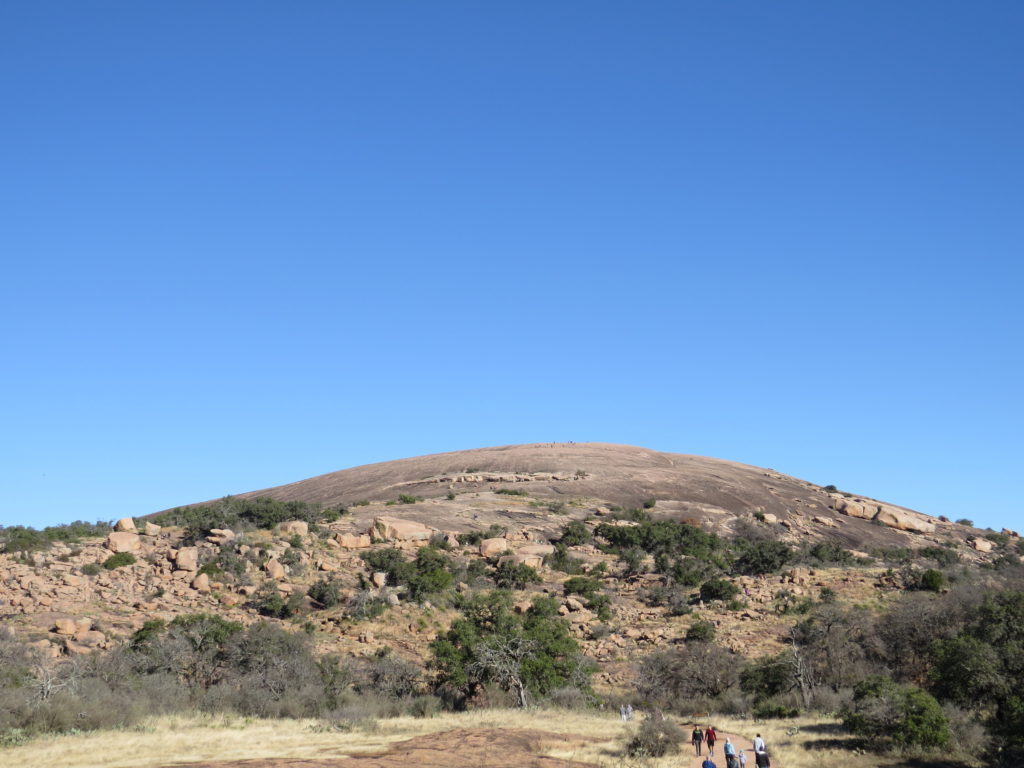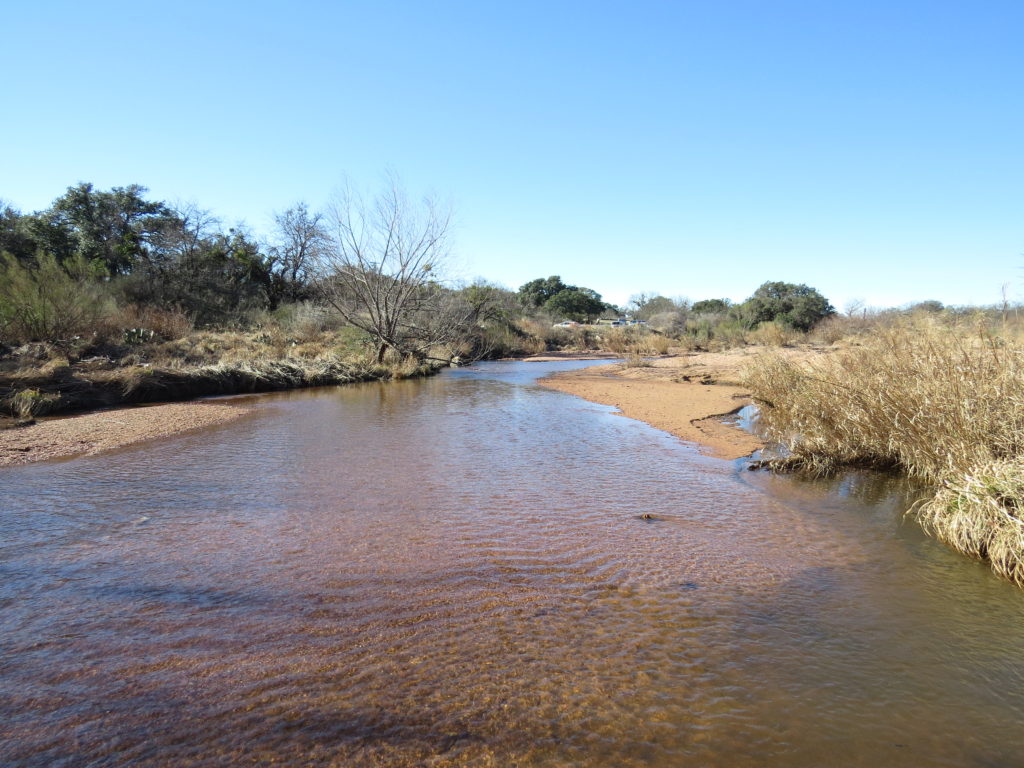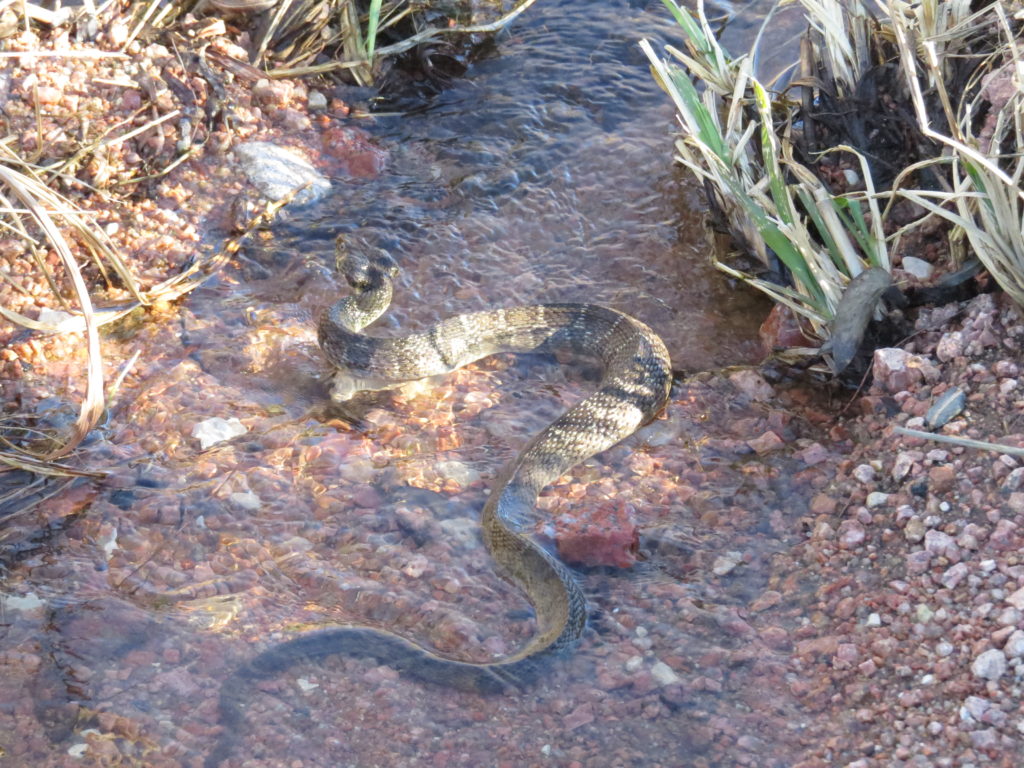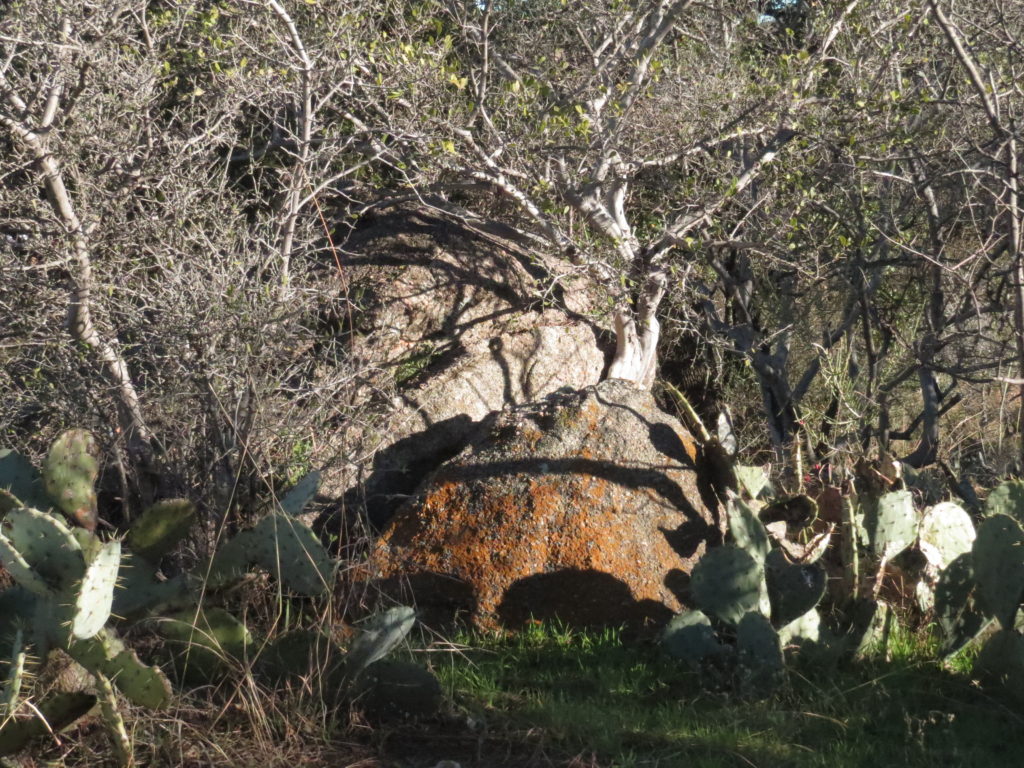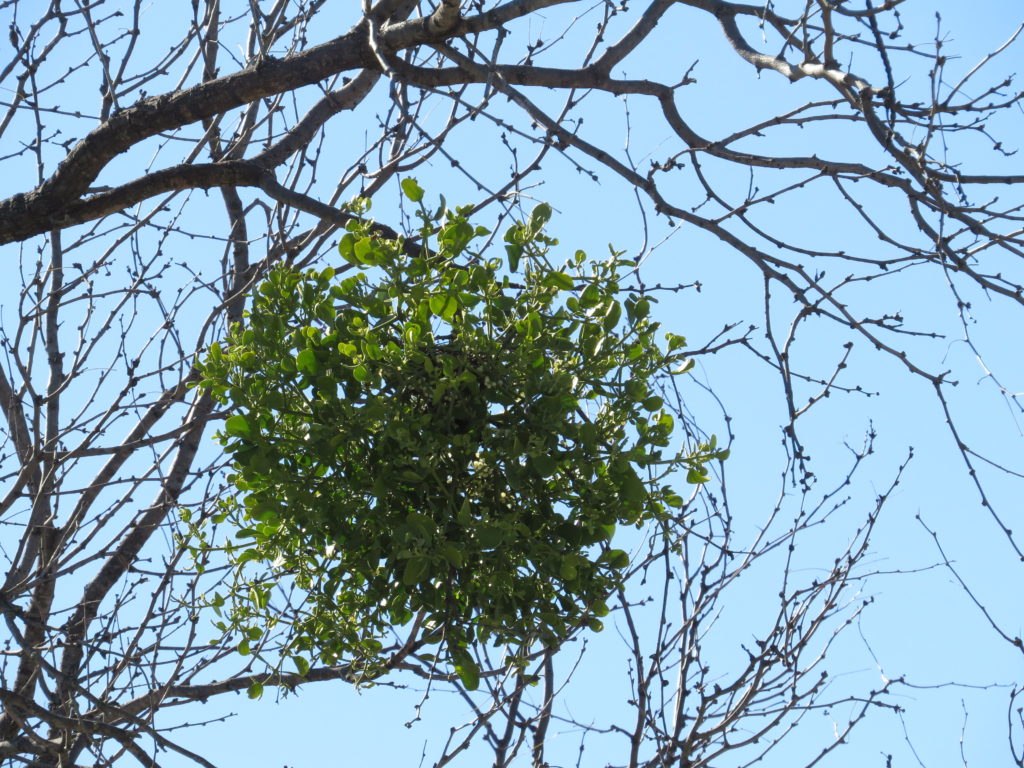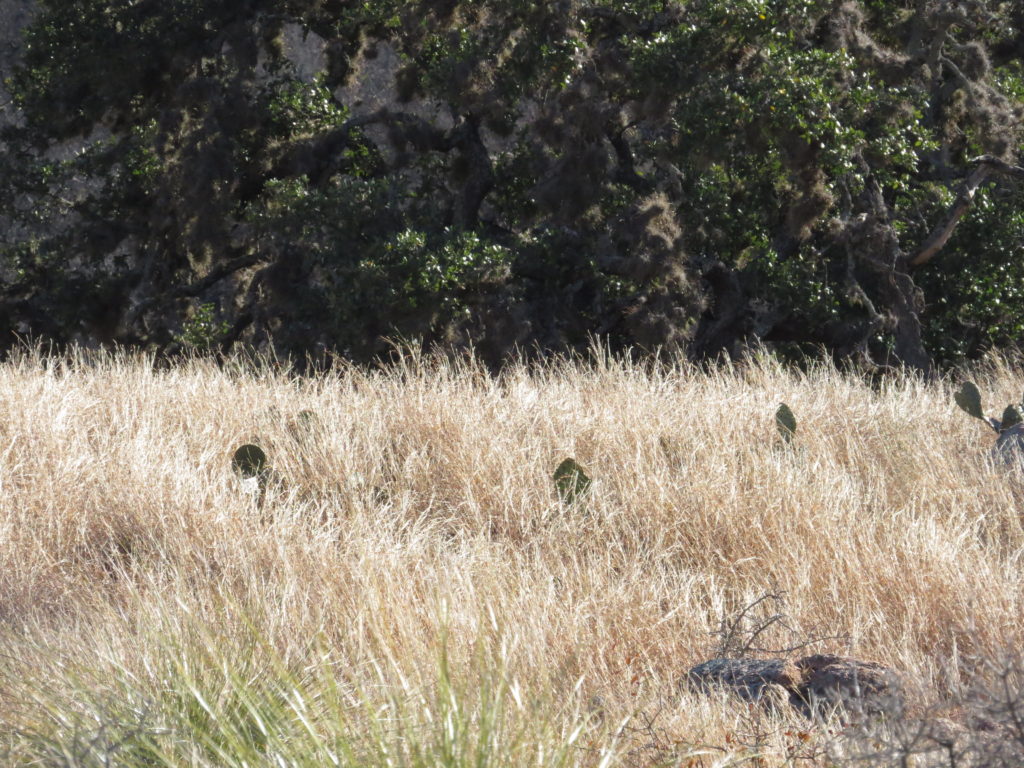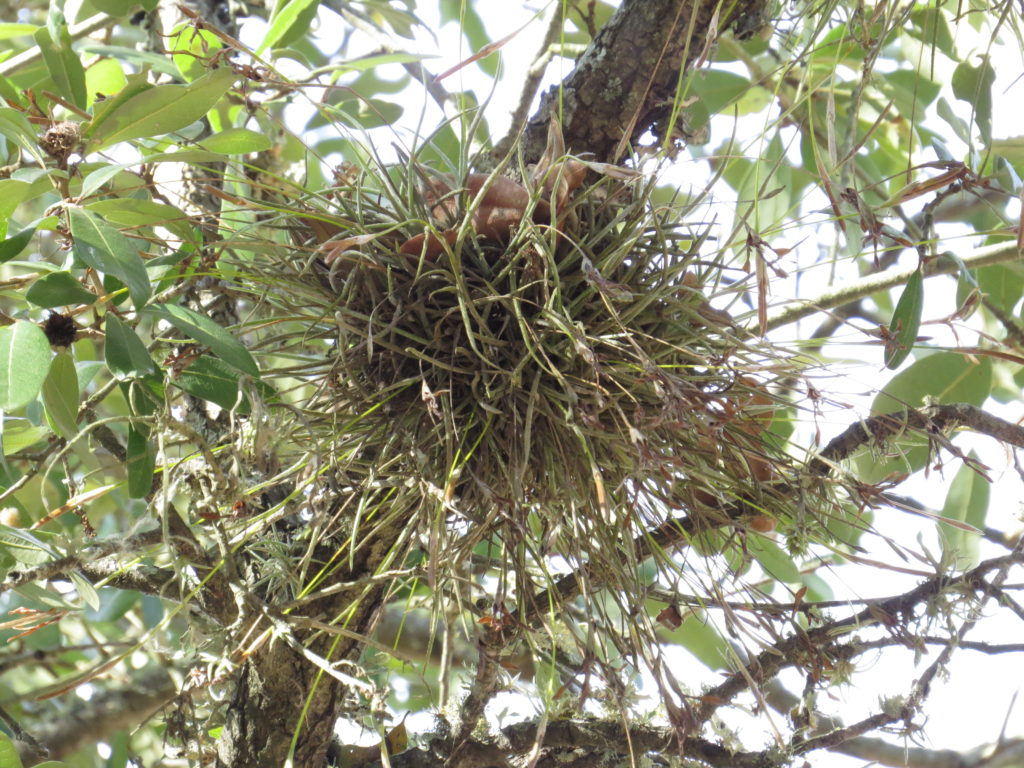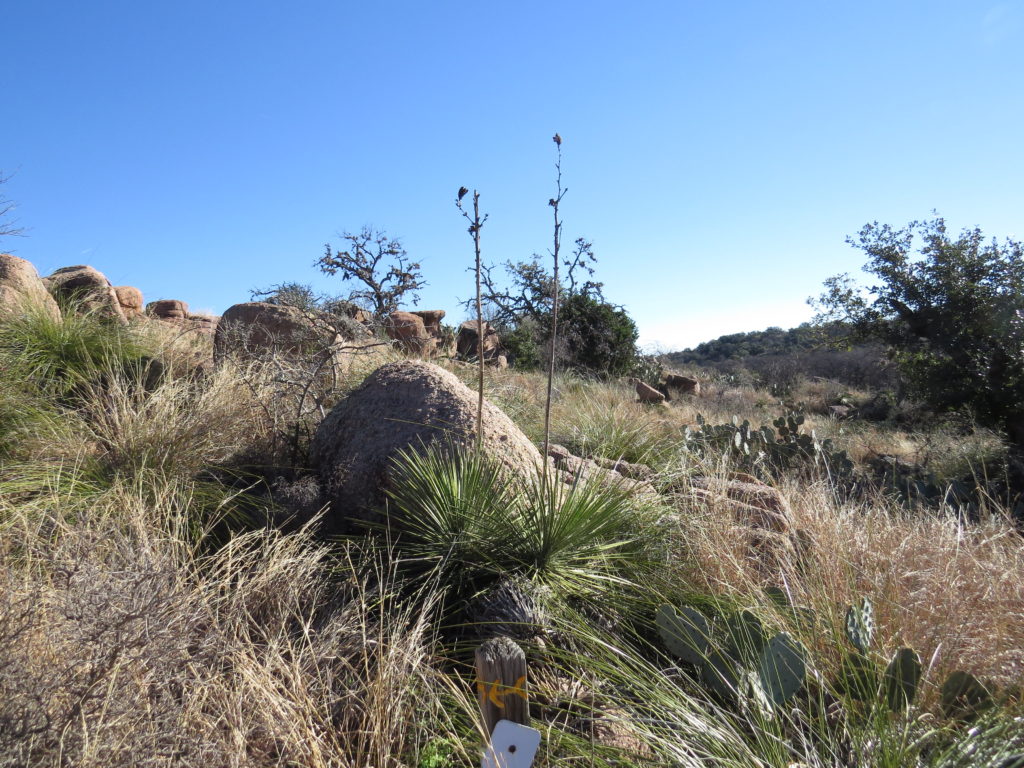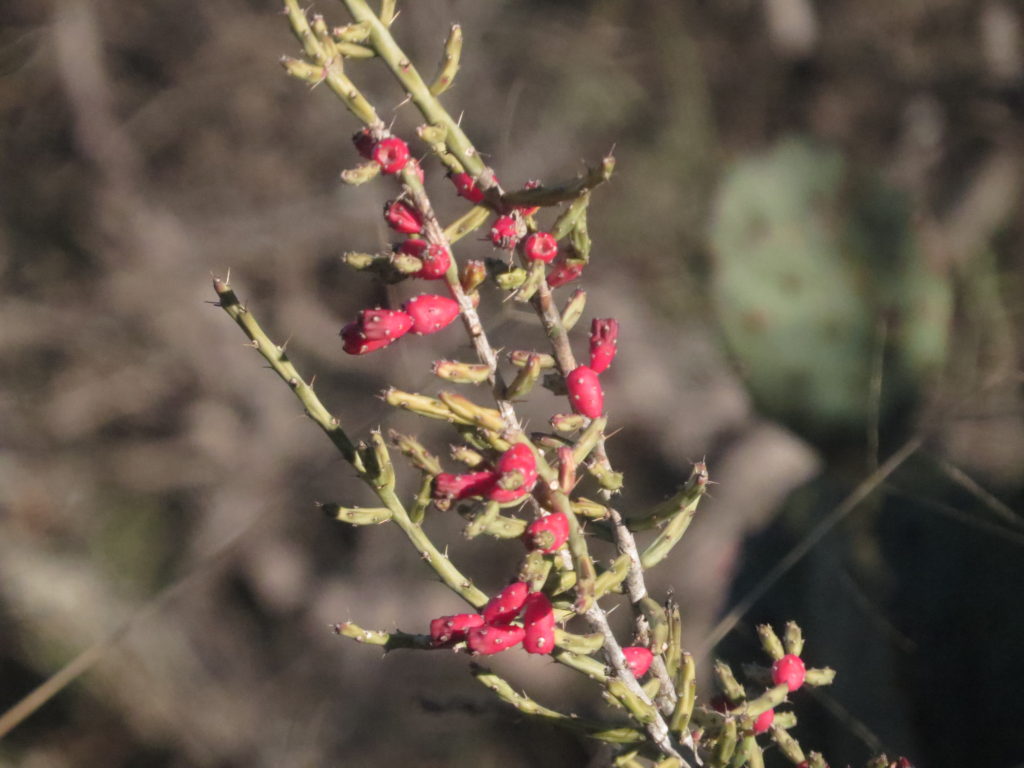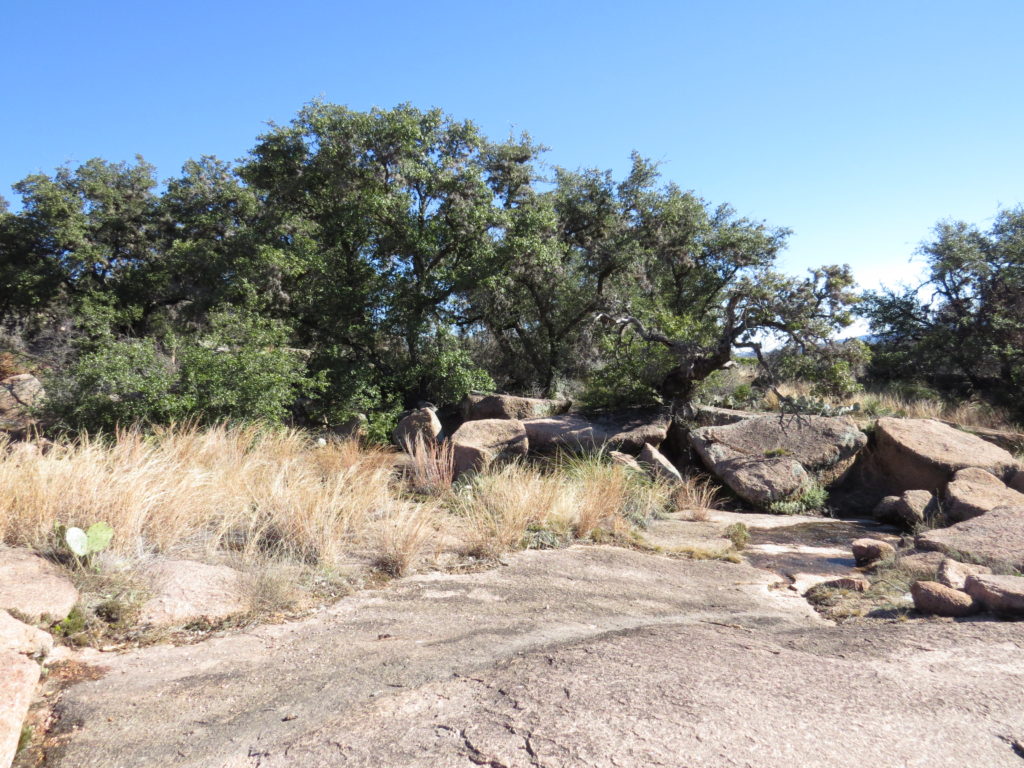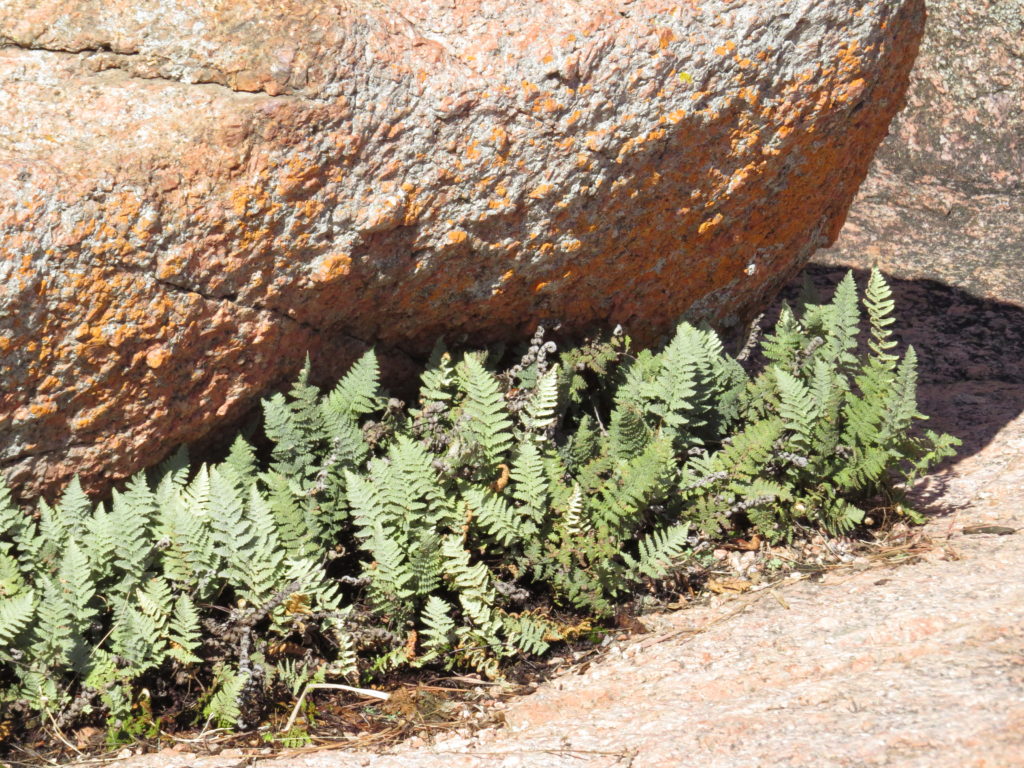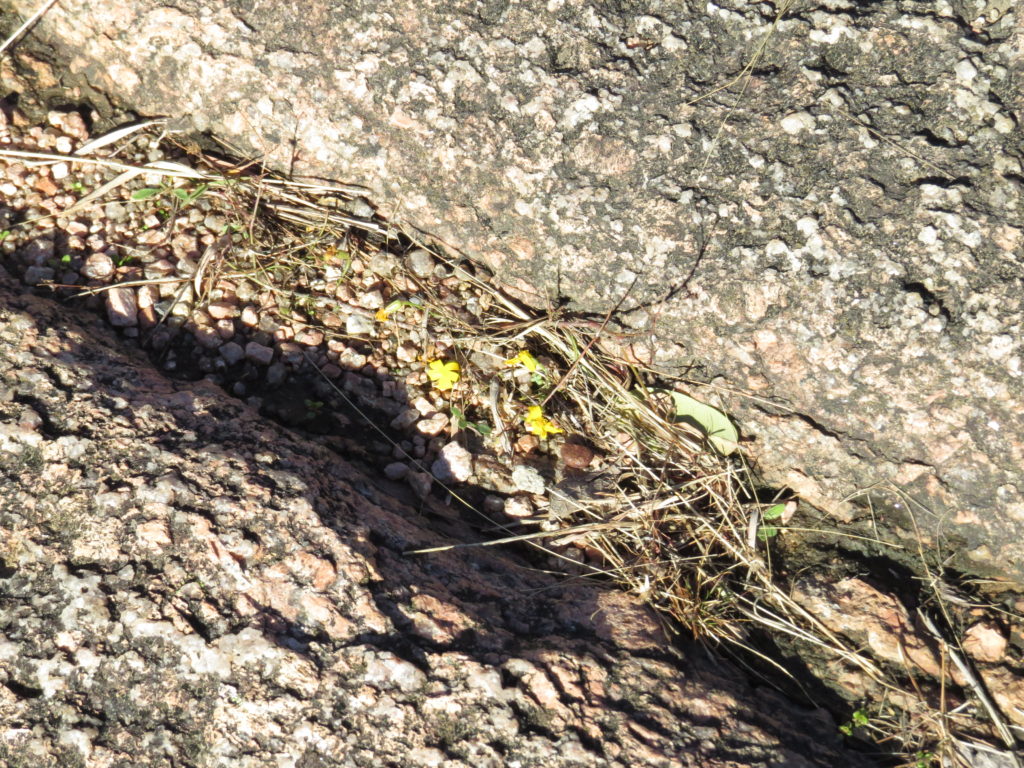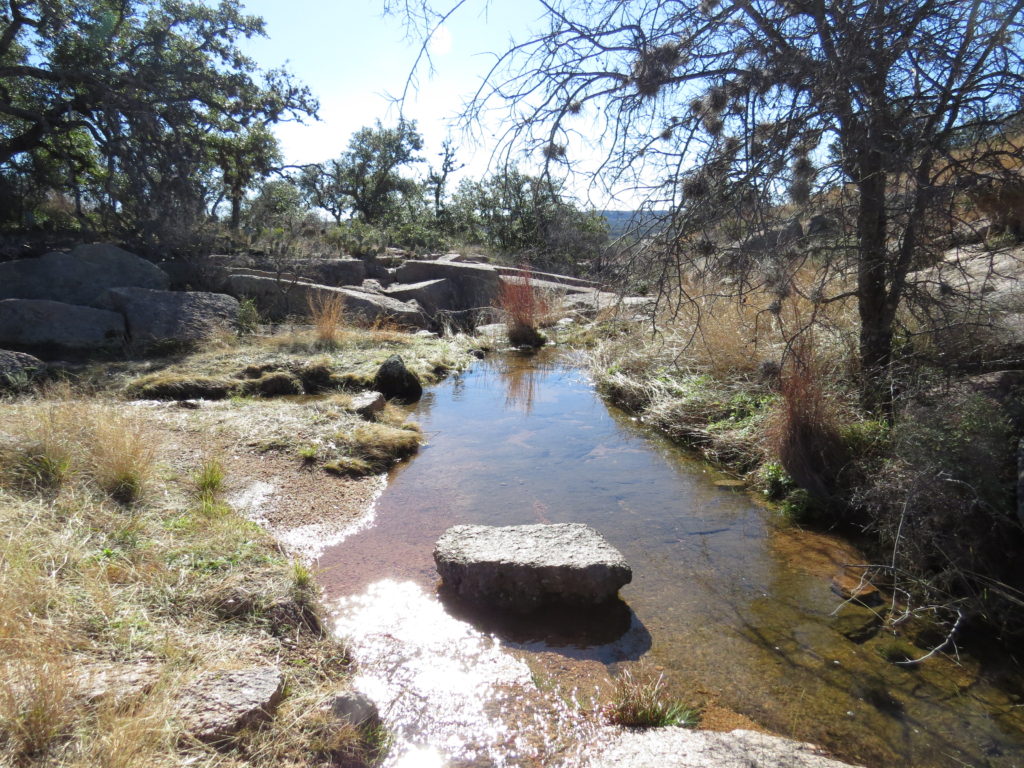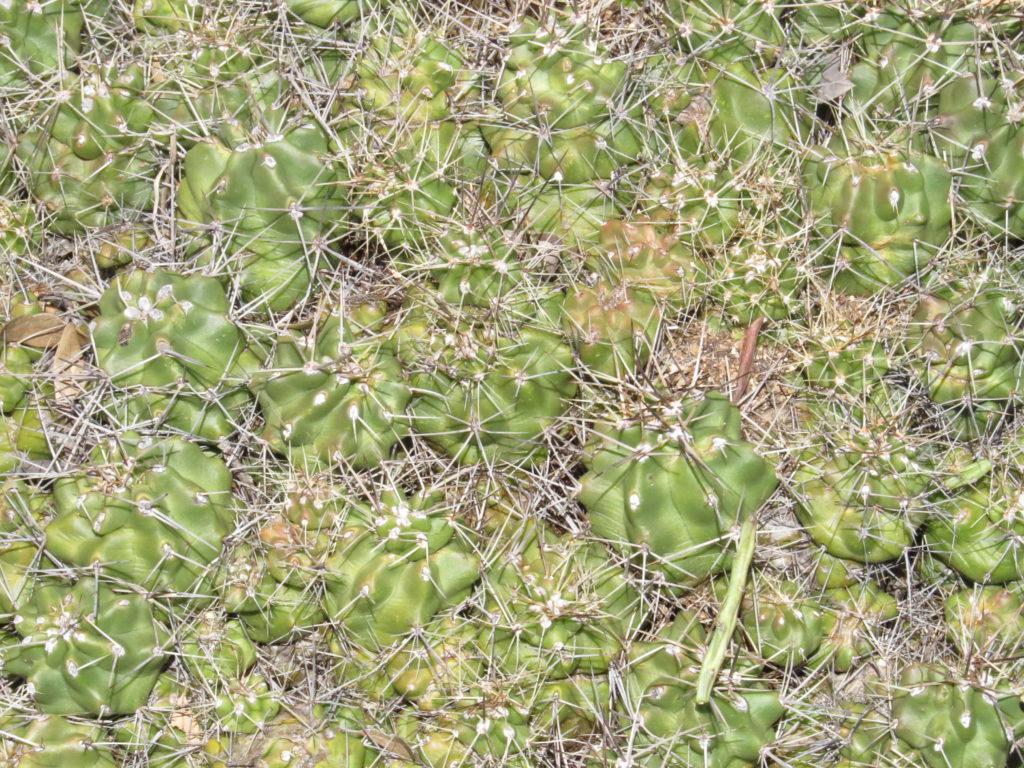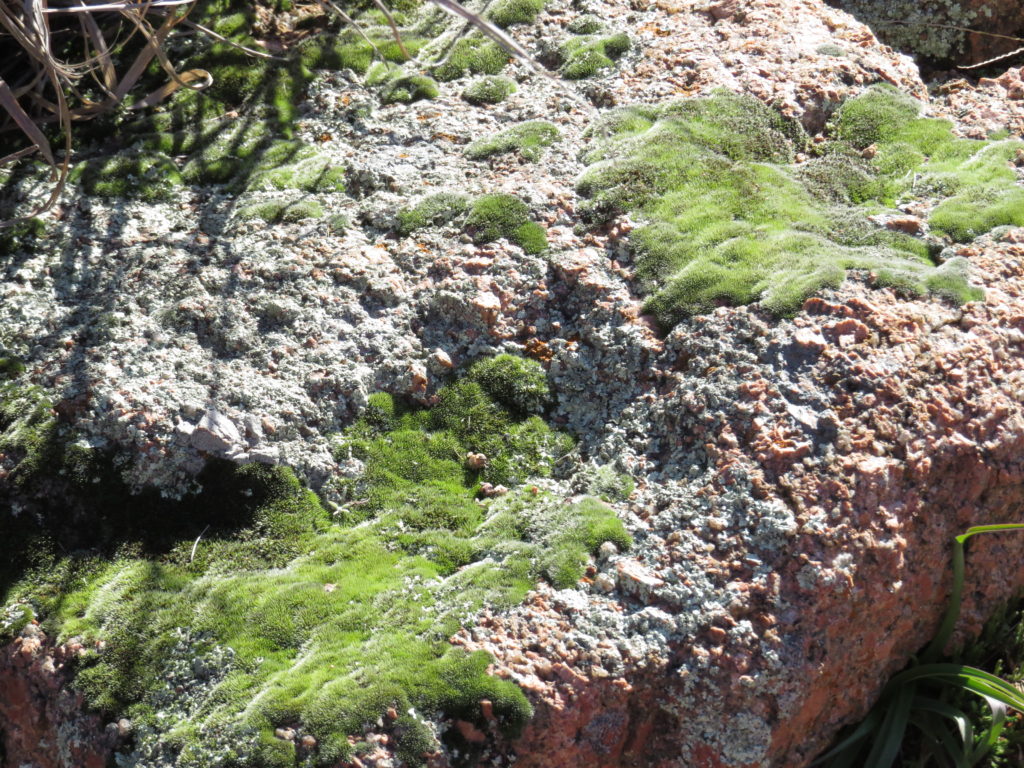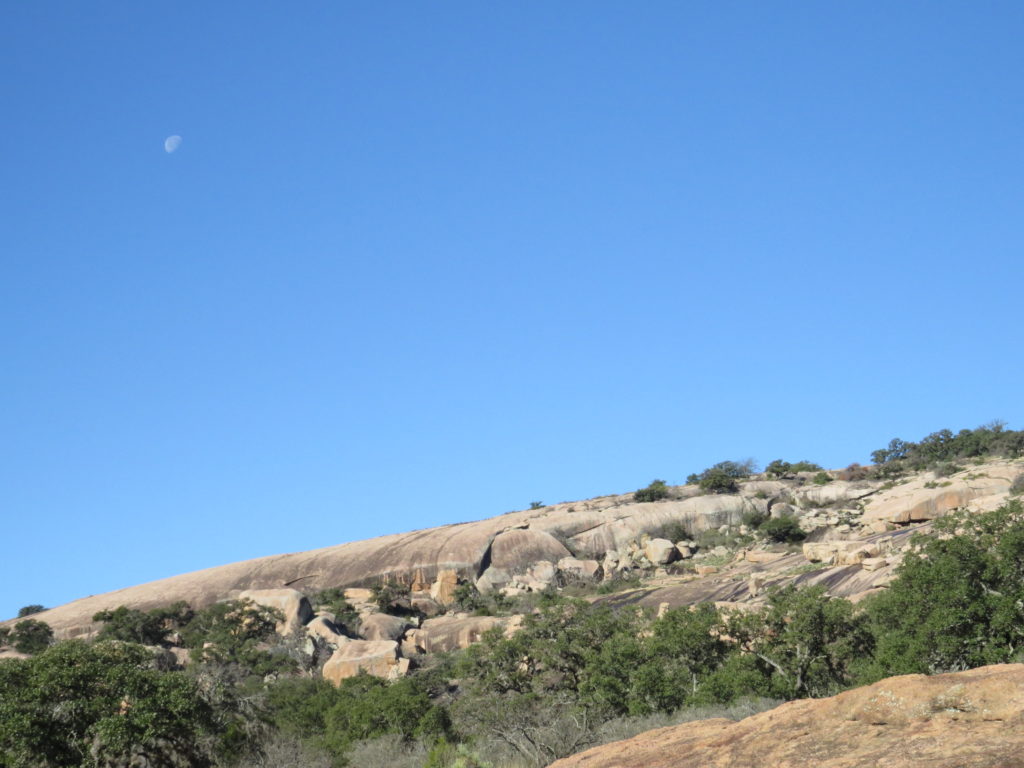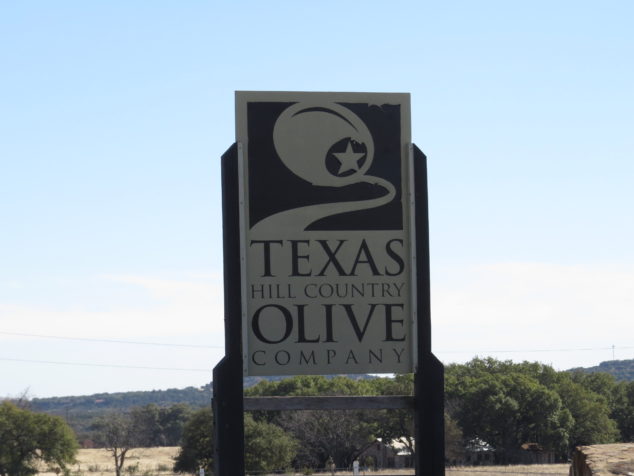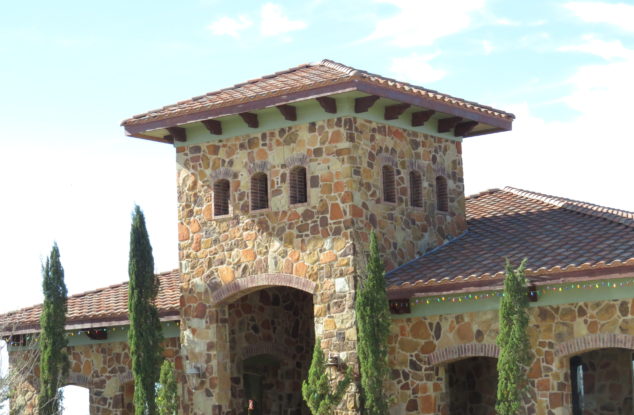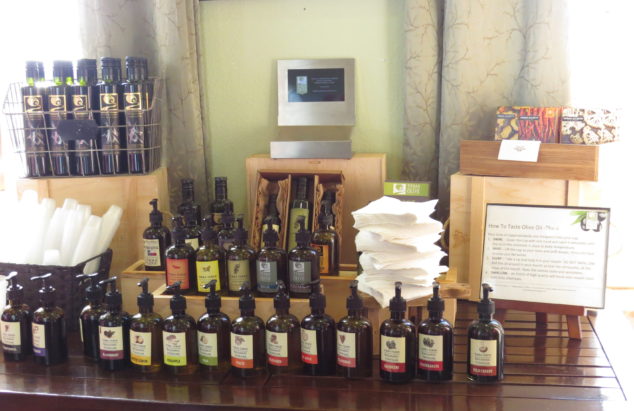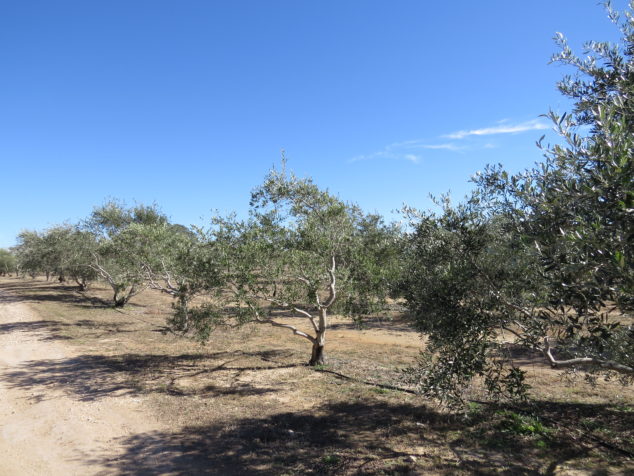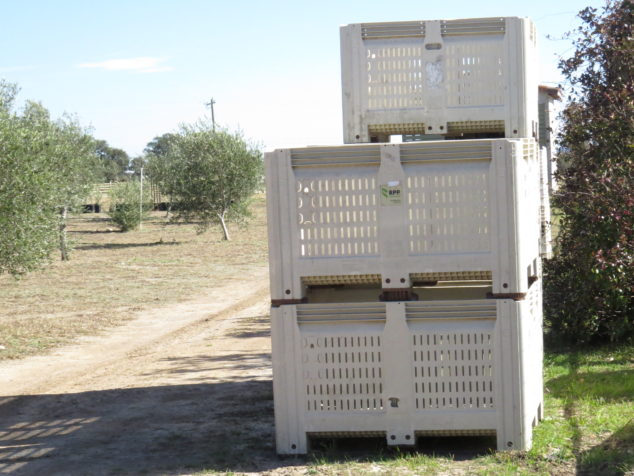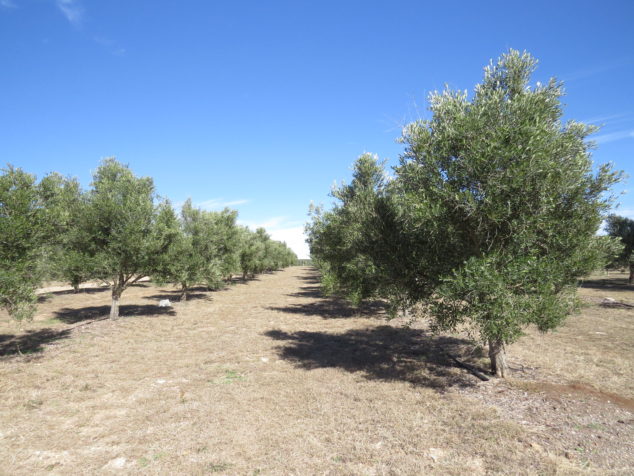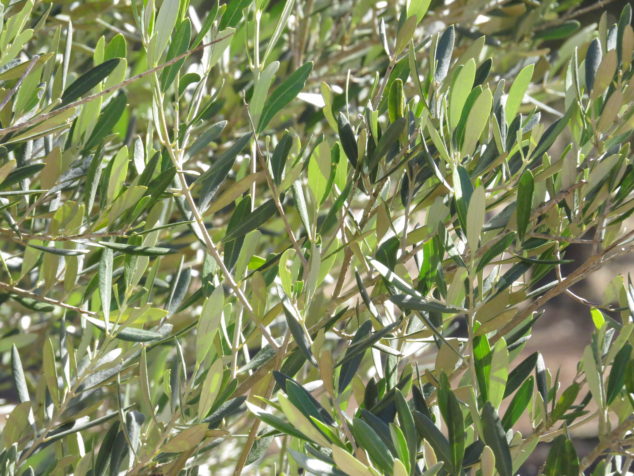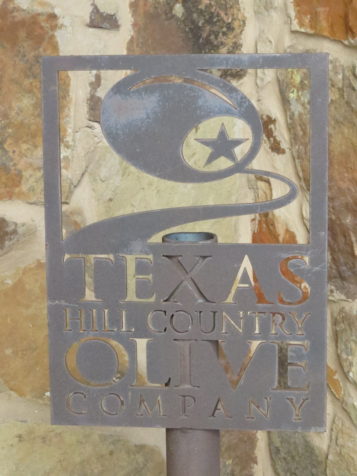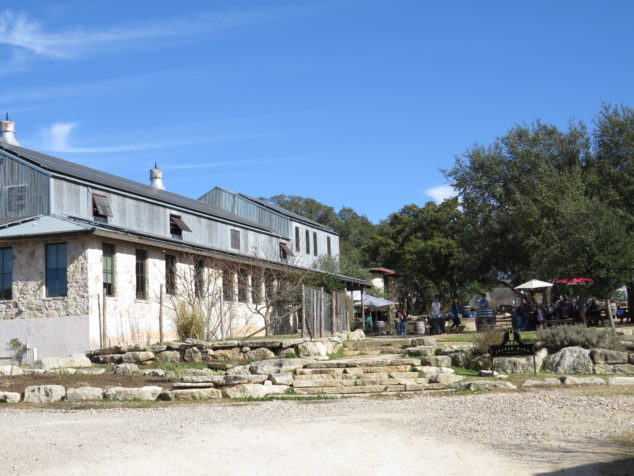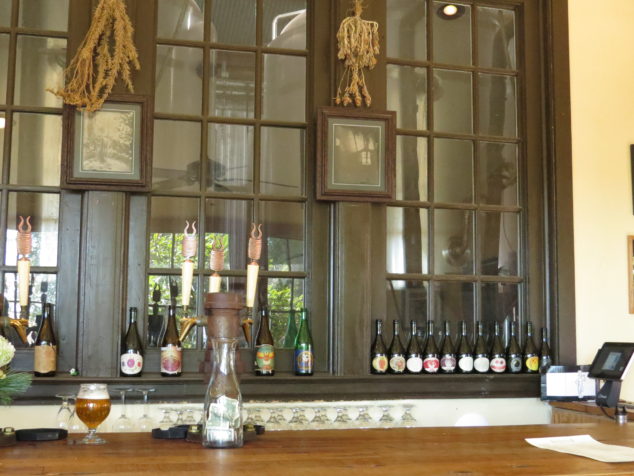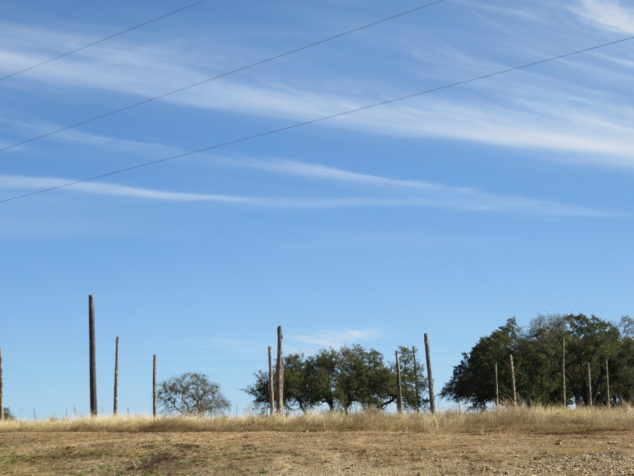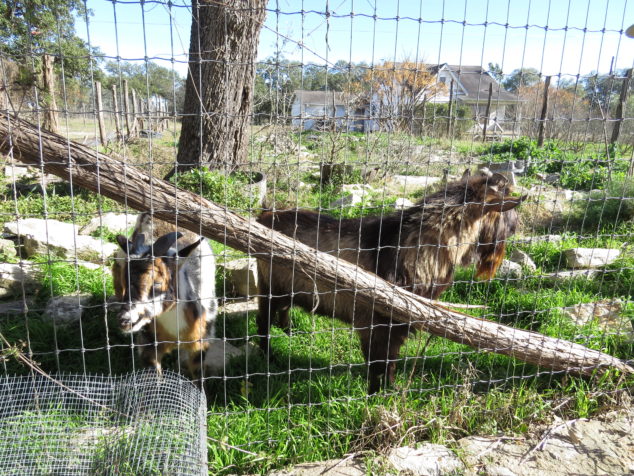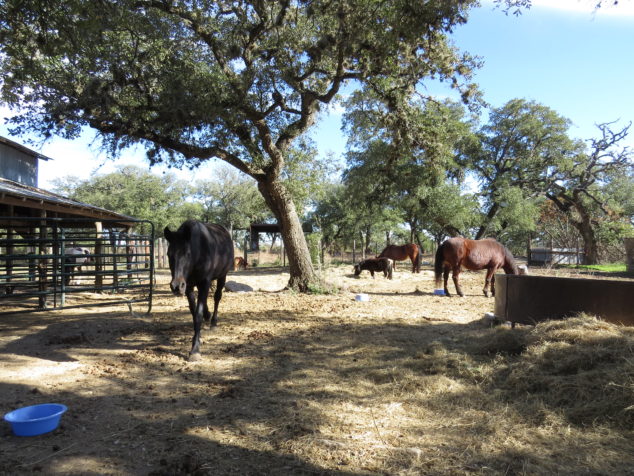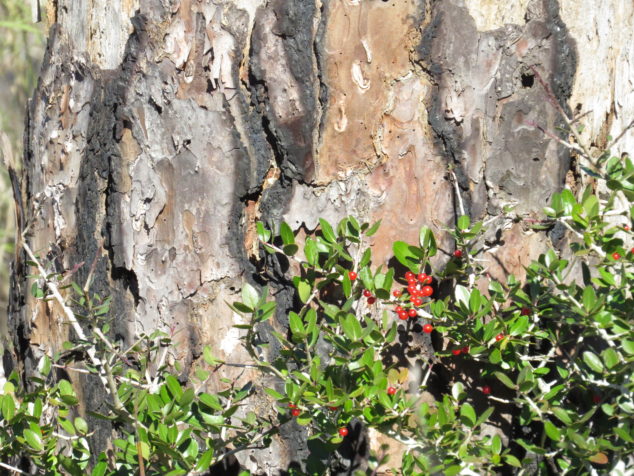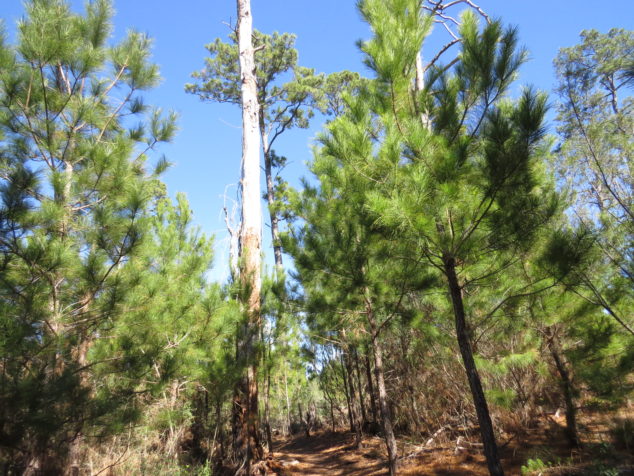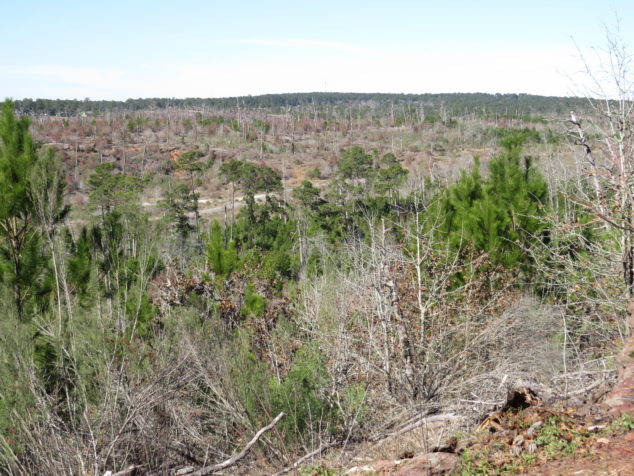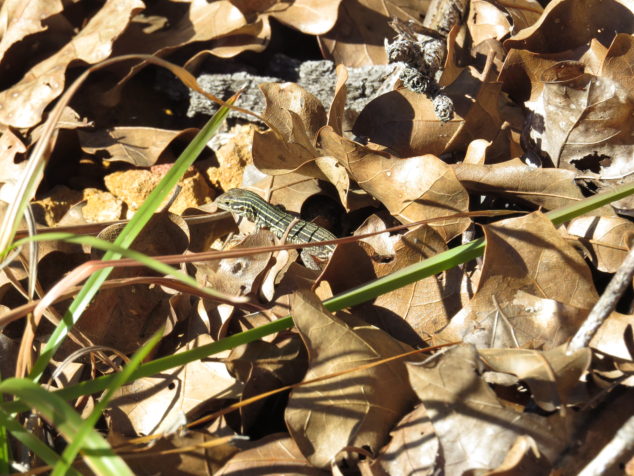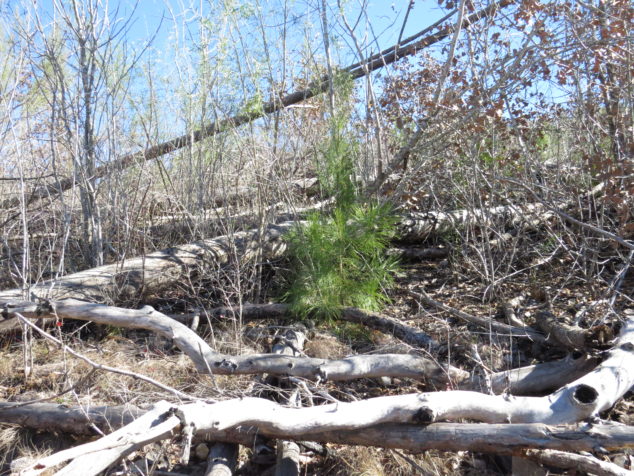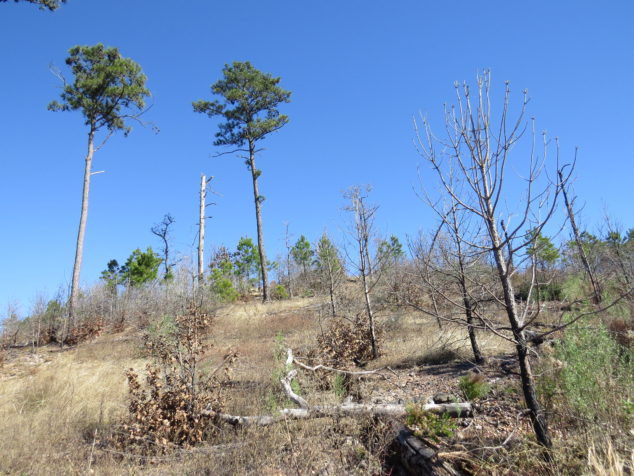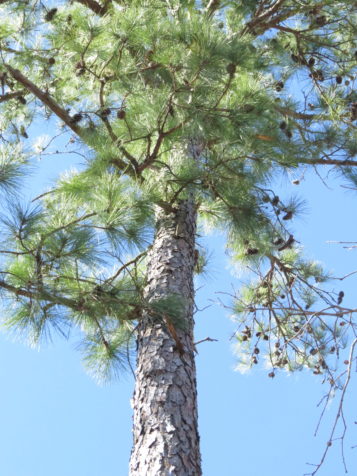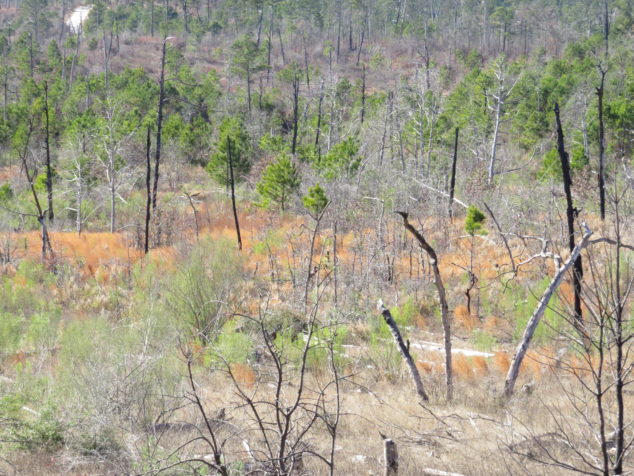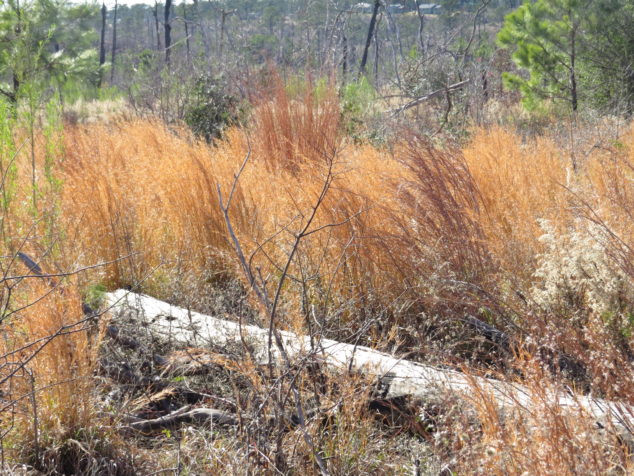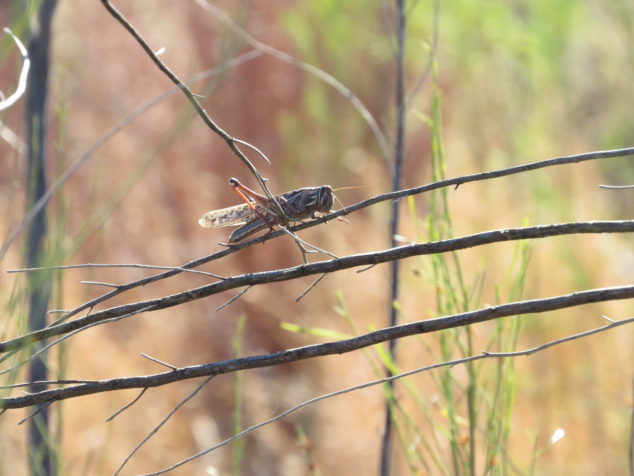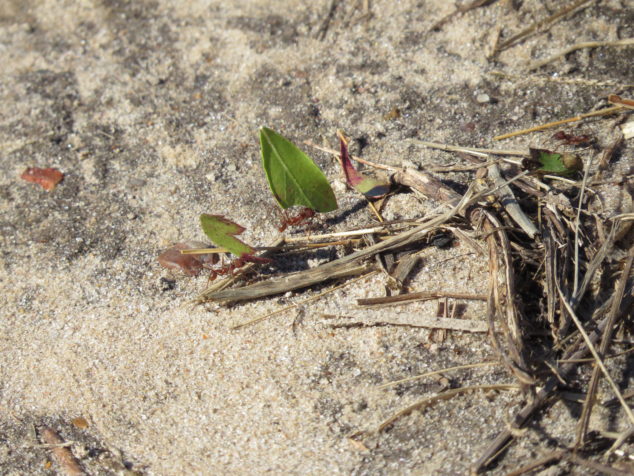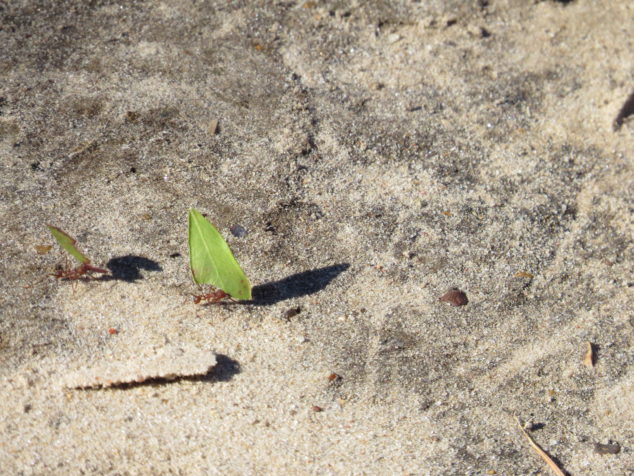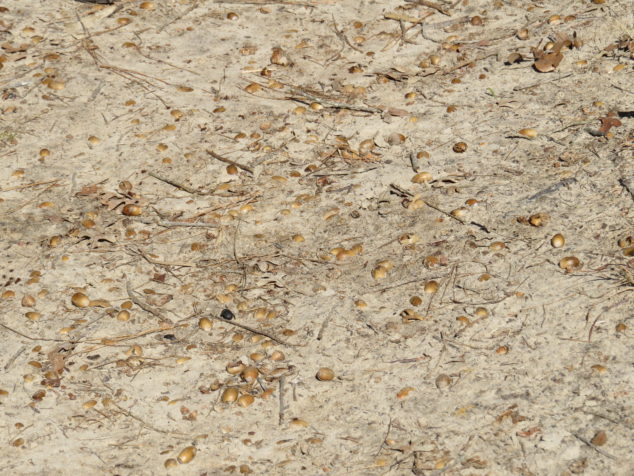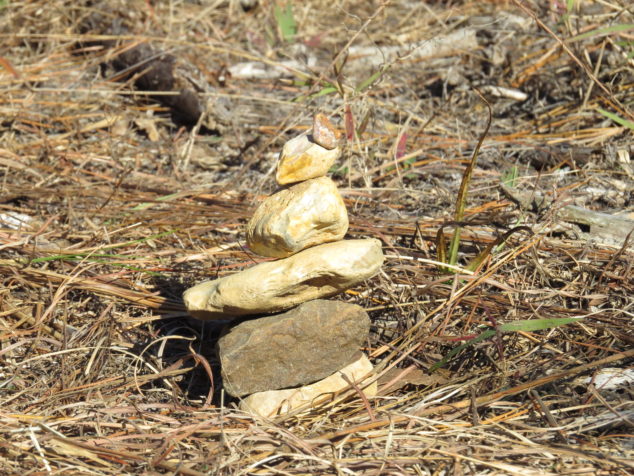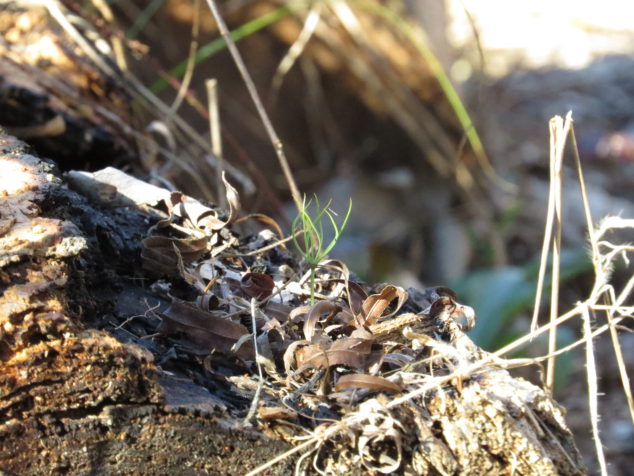And so we climbed the Rock—the Enchanted, intriguing Rock. As we climbed, we left behind the sandy soil and evergreen Live Oak trees; the trail was a solid rock beneath our feet. We could pick our own path, like scampering mountain goats, exploring the rugged terrain. Island ecosystems of Prickly Pear and grasses defied the reality of growing on solid rock.
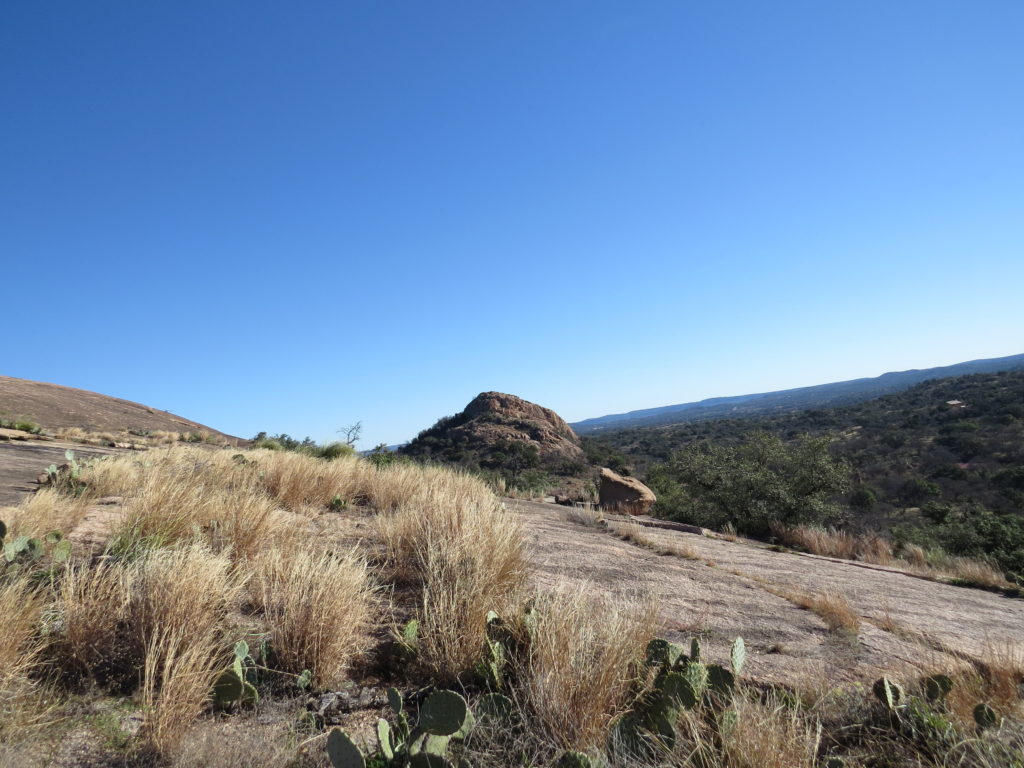
When we turned around, we could see how far we had already come, and the way to the top looked deceptively close in the bare expanse of rock.
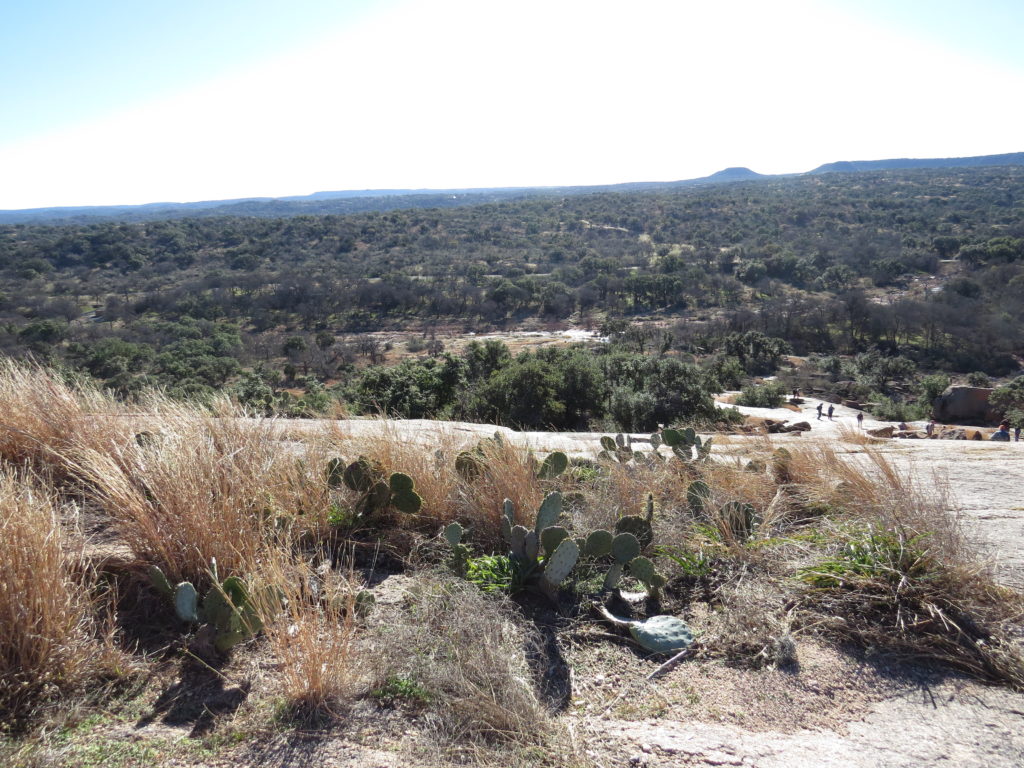
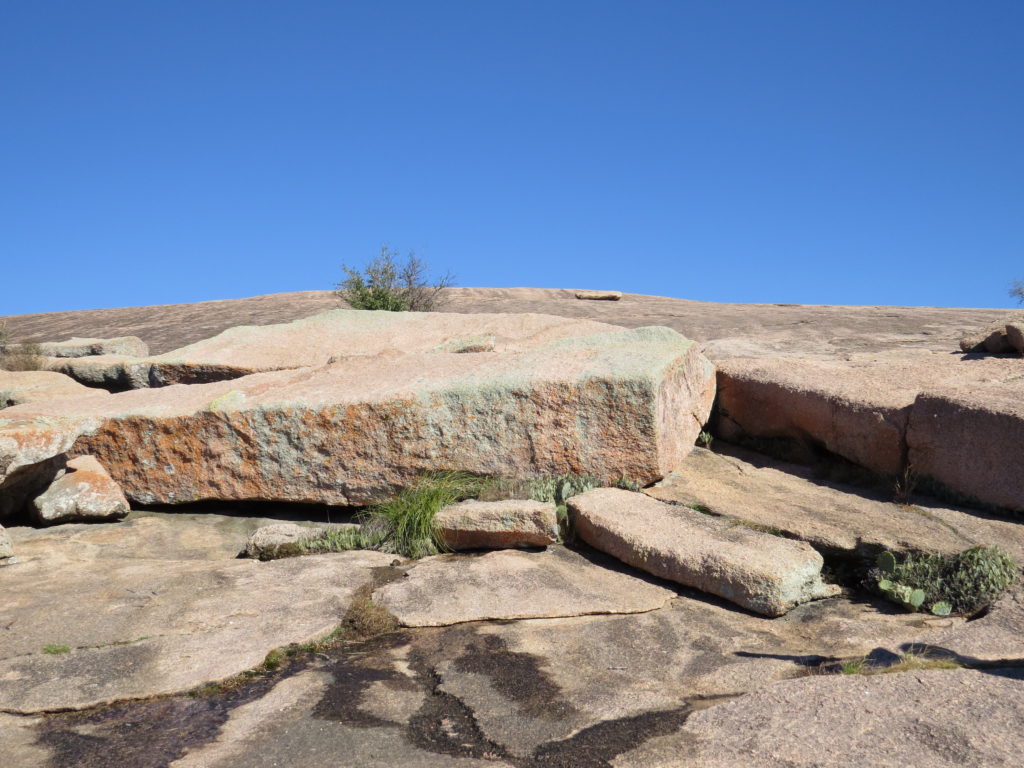
The wind became so strong it took our breath away. It was hard to hear anyone talking, and we used our heavy adult-sized bodies to anchor us to the rock with each footstep. We wondered how a child would even be able to walk without being blown away. The steep upward climb was made harder with the incessant push of the wind, and sometimes we sat or lay on the rock just to get a bit of relief from the gale.
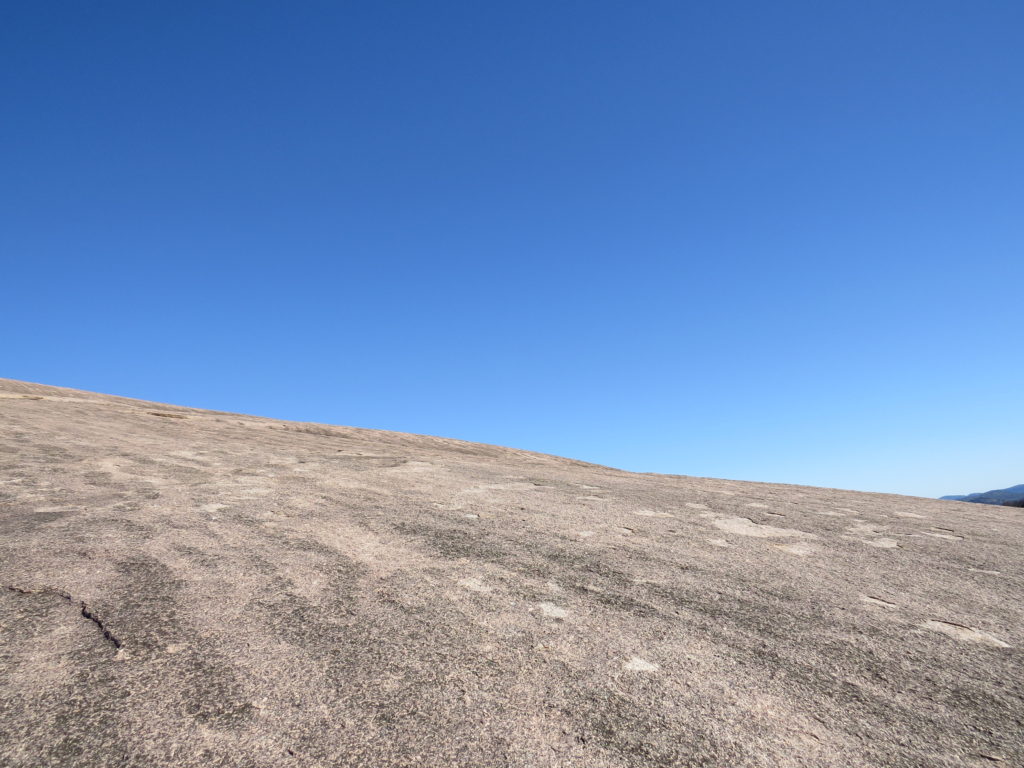
It was like a moonscape on the huge dome—craters and cracks and crevices, and there was a sense of just how ancient this rock-of-a-planet Earth is that we live on. Humbling.
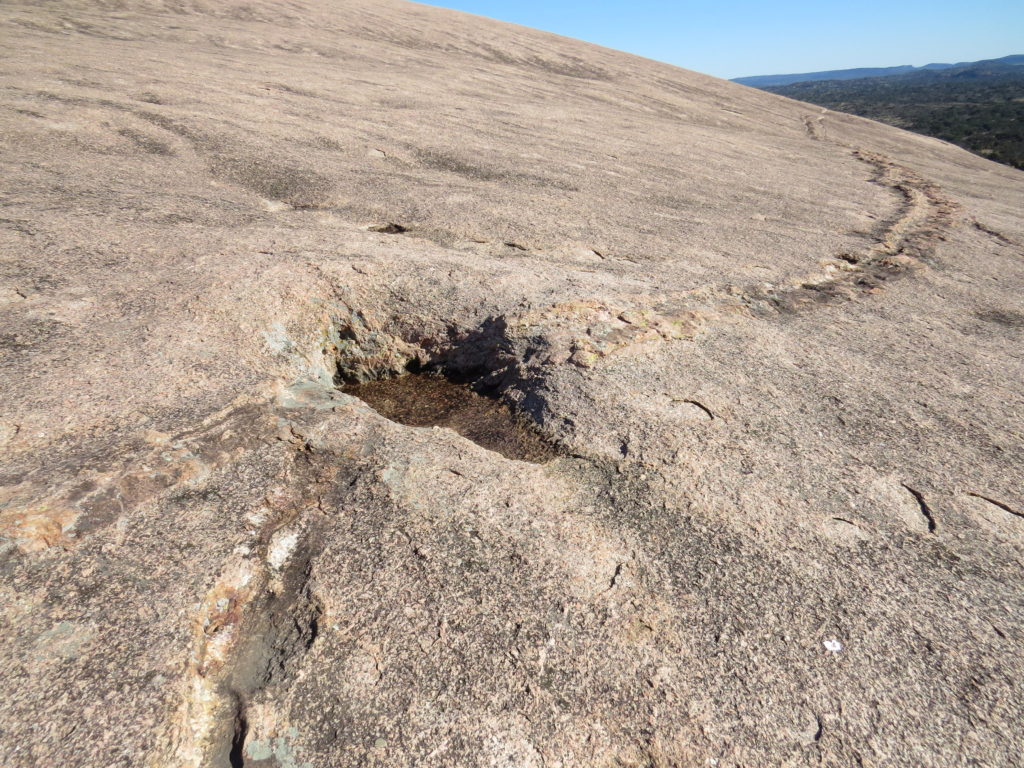
As we neared the top, weathering pits filled with the previous night’s rainfall glimmered in the sunlight. The footprint-like craters have spawned myths about eternally wandering ghosts, but in reality, they are the probable reason for the ethereal glow on a moonlit night, which induced someone to name it ‘Enchanted Rock.’
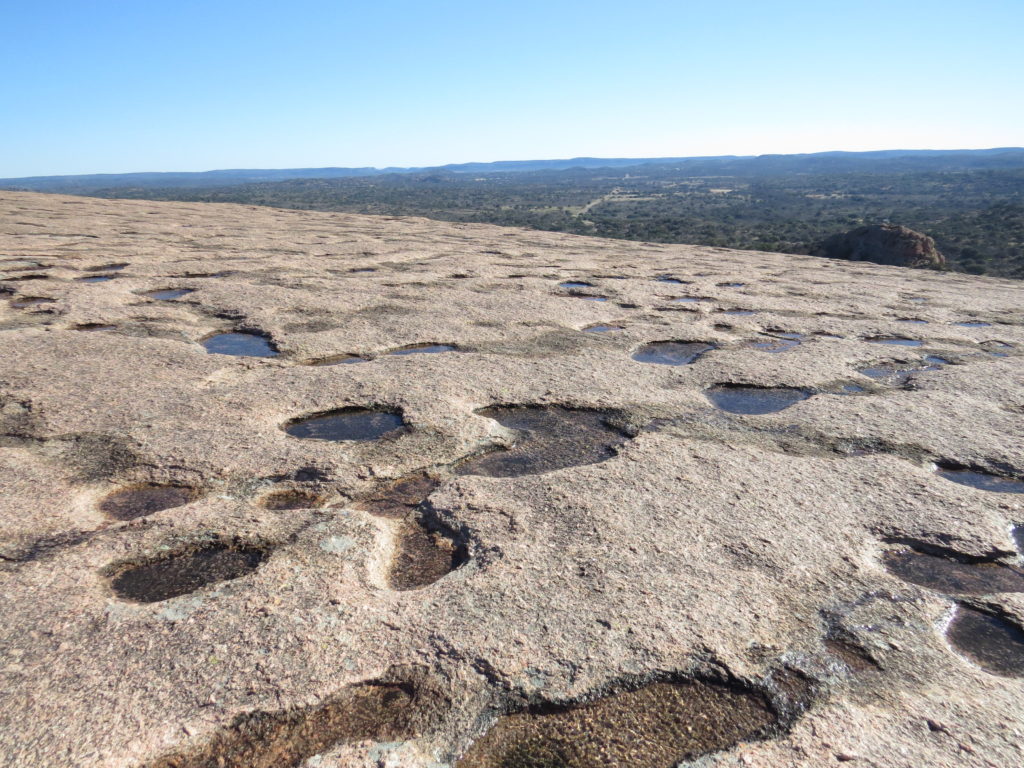
The larger weathering pits that retain water for weeks are called vernal pools. These delicate ecosystems are pioneer communities that contain minute plants and animals that will develop over time into an oasis of life. Tiny fairy shrimp are found and studied here, and a moss-like plant named rock quillwort is unique to this environment.
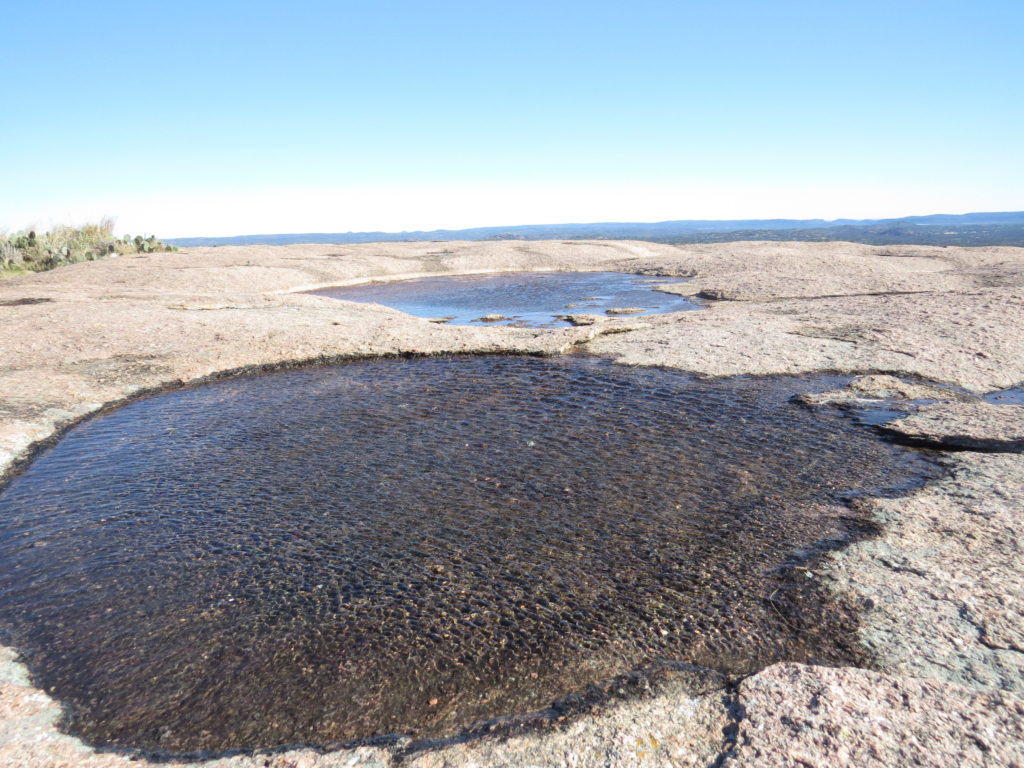
As bits of soil, seeds, and small creatures build up in the vernal pools, over time it transforms into a little island of life—willows, grasses, yucca, and prickly pear cactus—shelter and food for wildlife who live on the Rock.
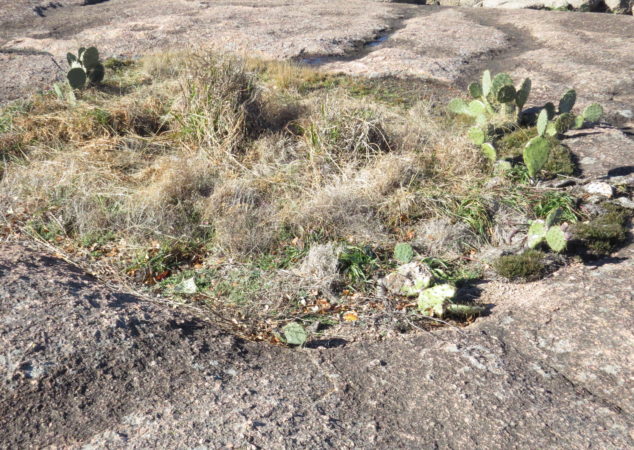
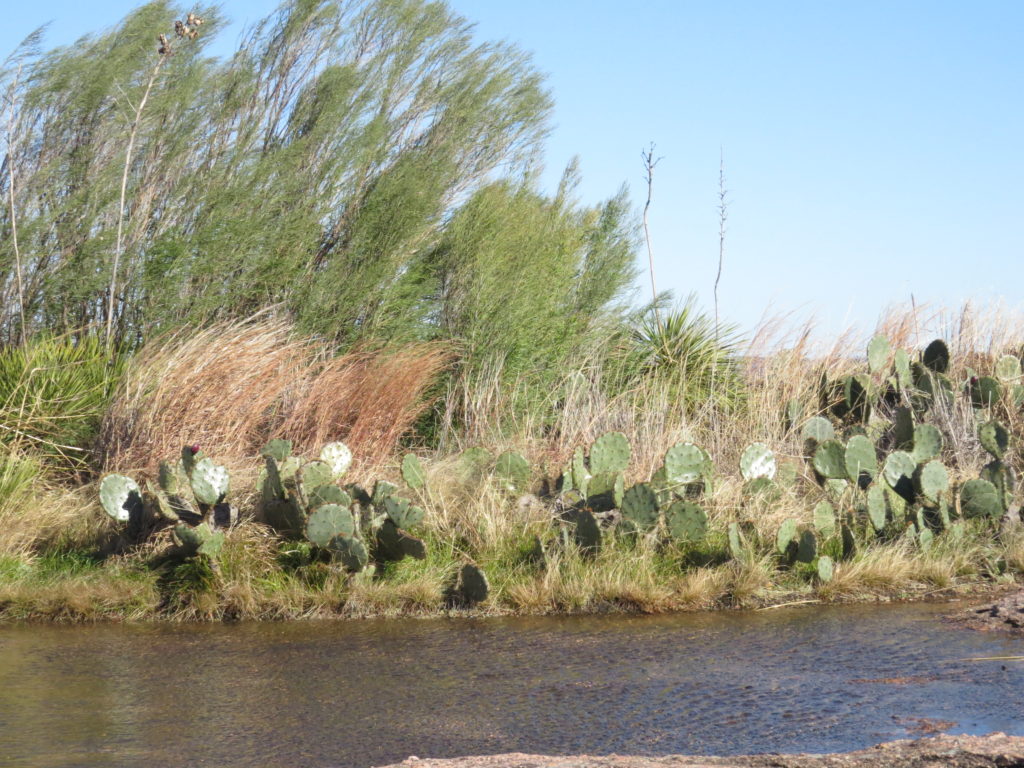
The view from the top of the Rock was stunning in all directions!
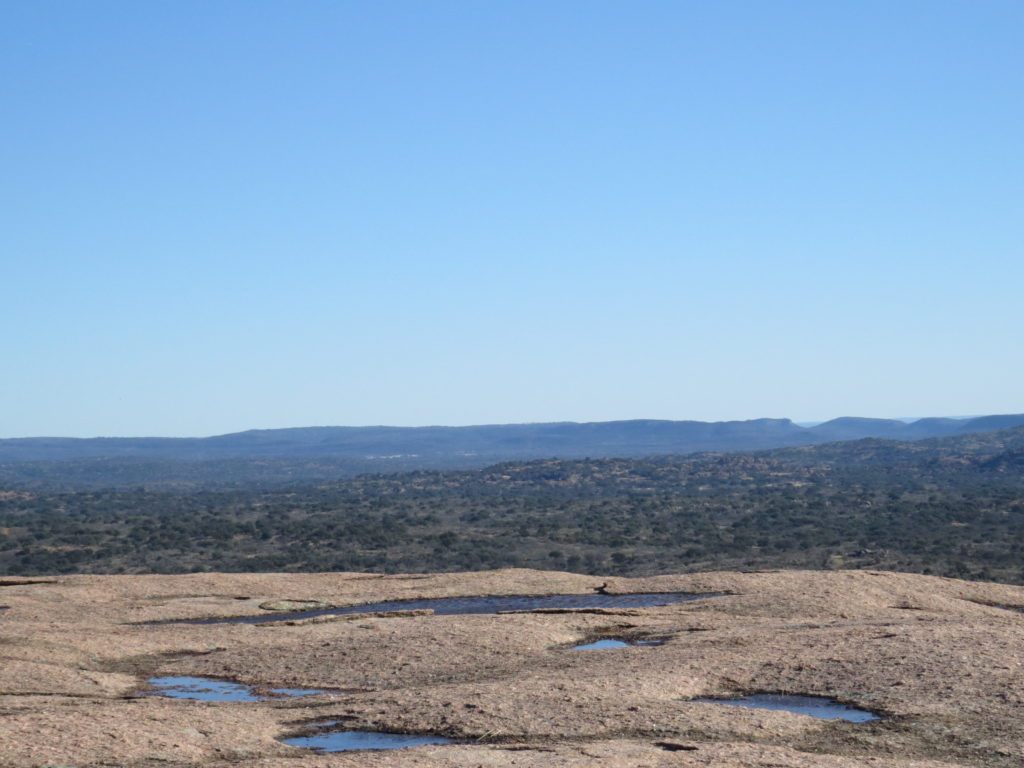
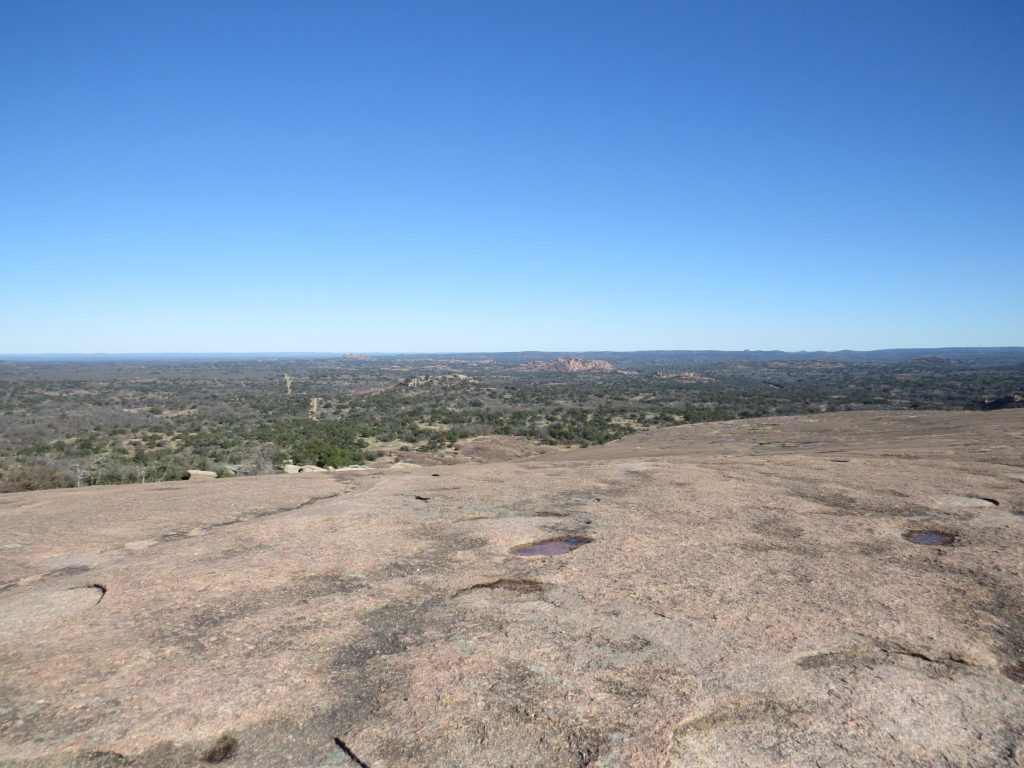
The geographical high point was marked by an official survey seal, and we marked our climb with an official high point selfie!
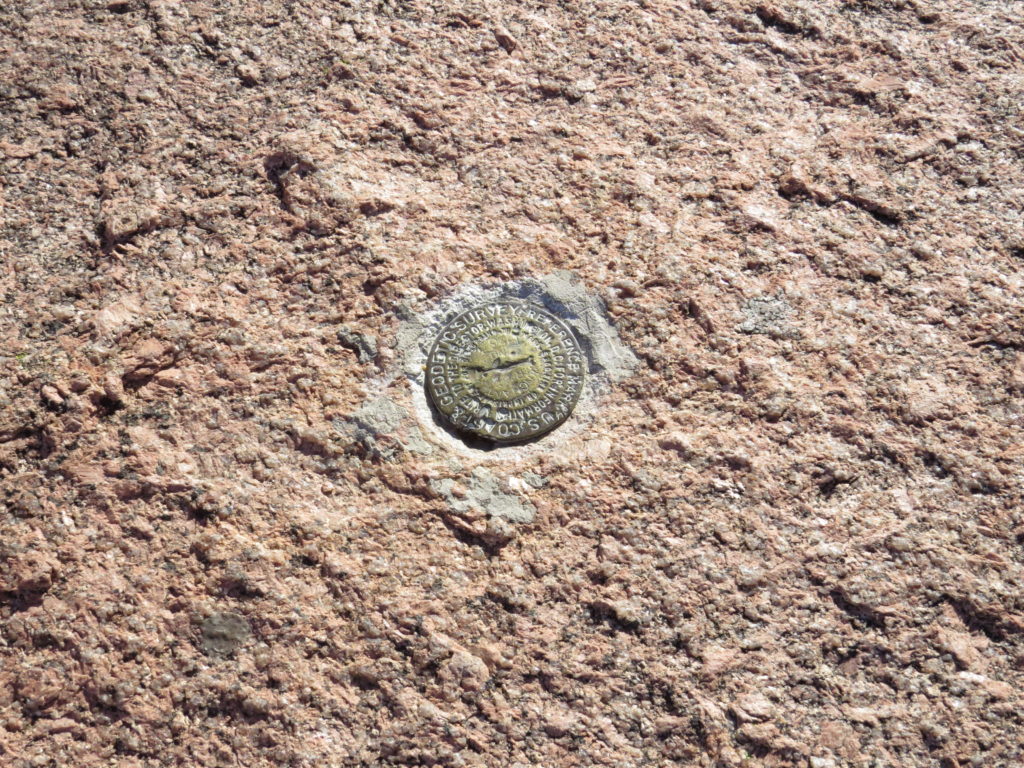
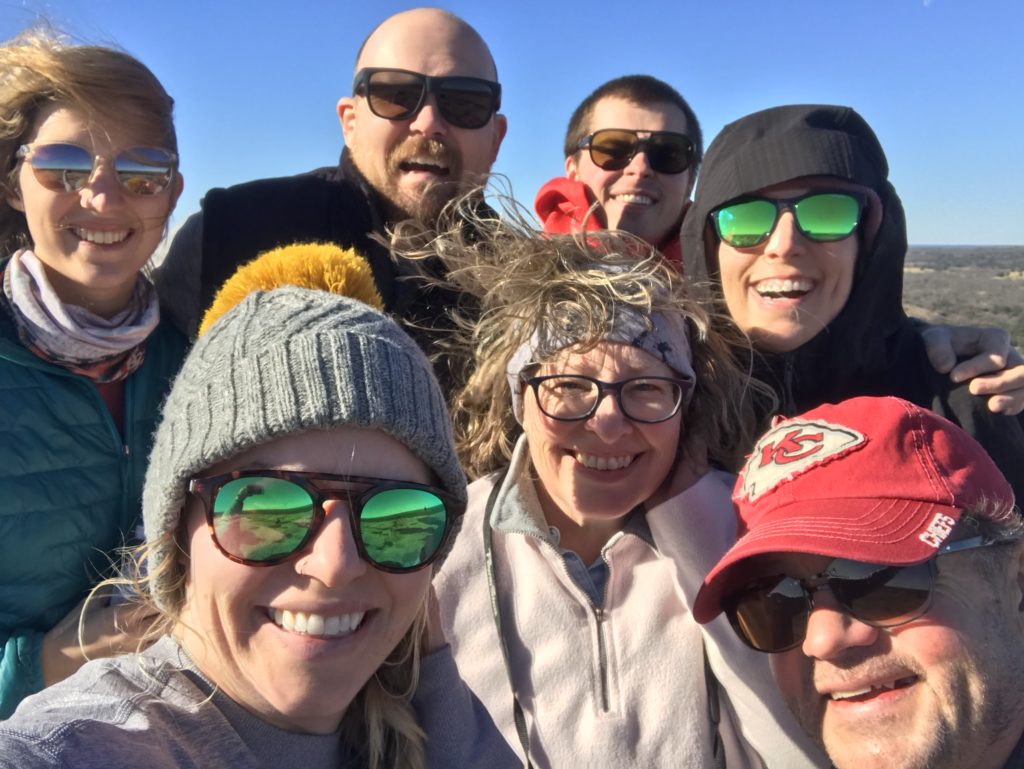
We walked toward a pile of huge boulders on the northeast side where there was a cave. We were below the summit enough to be out of the strongest wind. Two lizards were warming themselves on the south-facing rock—a Texas Spiny Lizard and a camouflaged Crevice Spiny Lizard. What cool creatures!

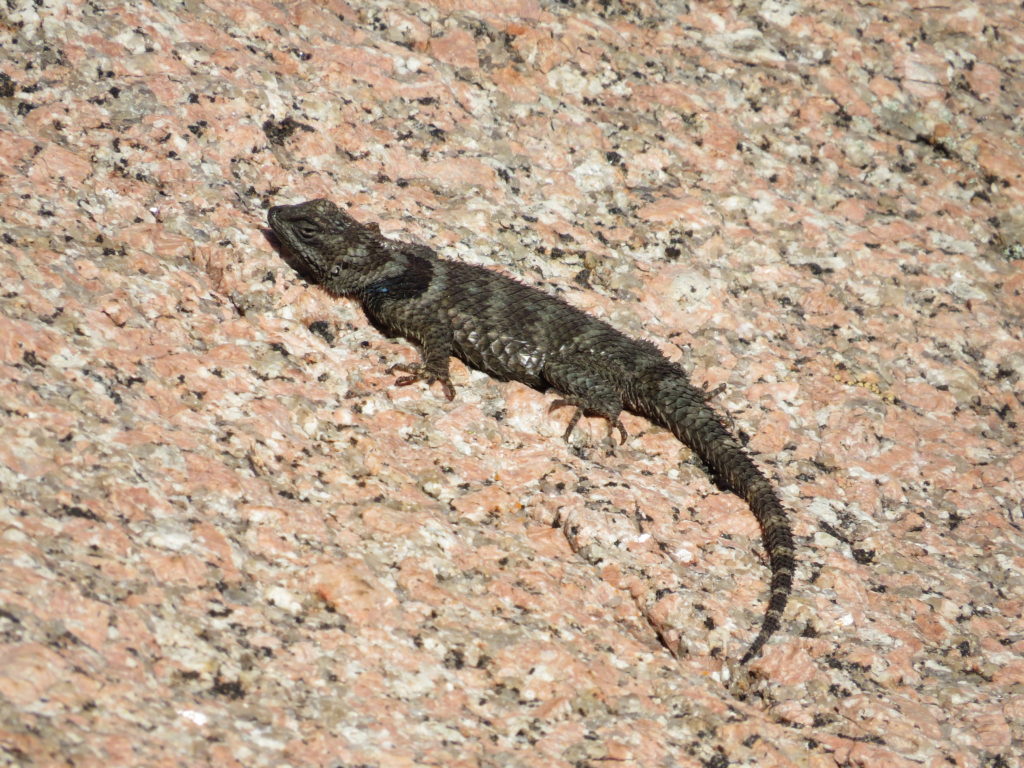
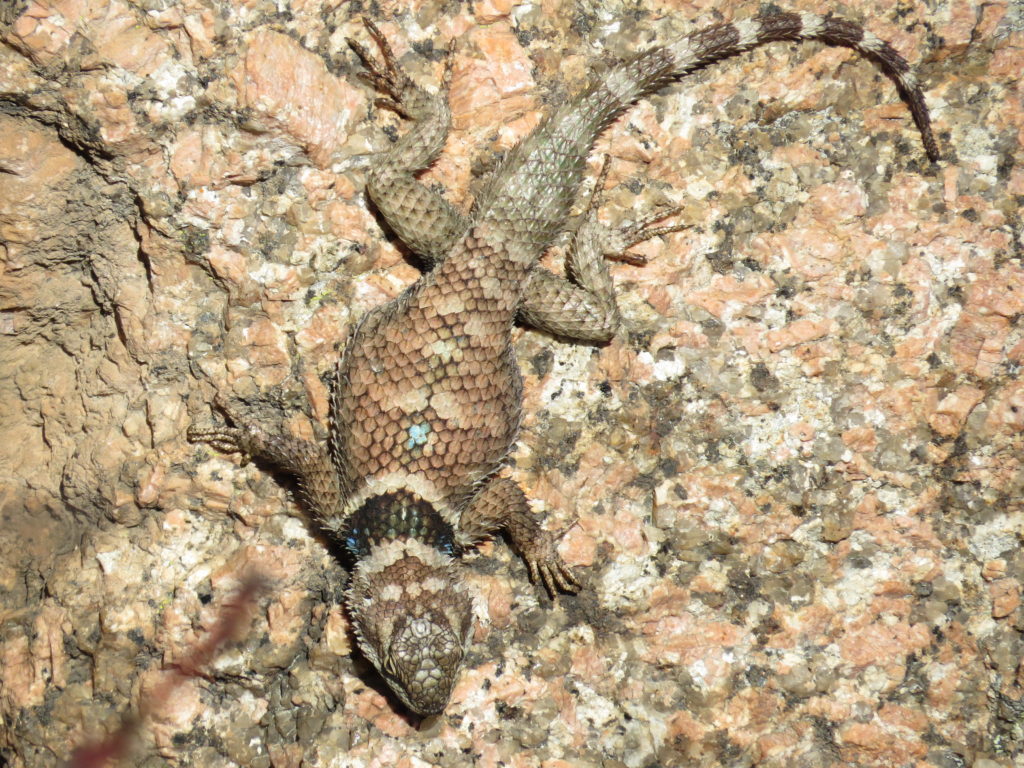
Some of us climbed into the cave—not to the crawl-on-your-hands-and-knees part—but through to a secret garden area where a couple of wind-swept, twisted-trunk trees grew.

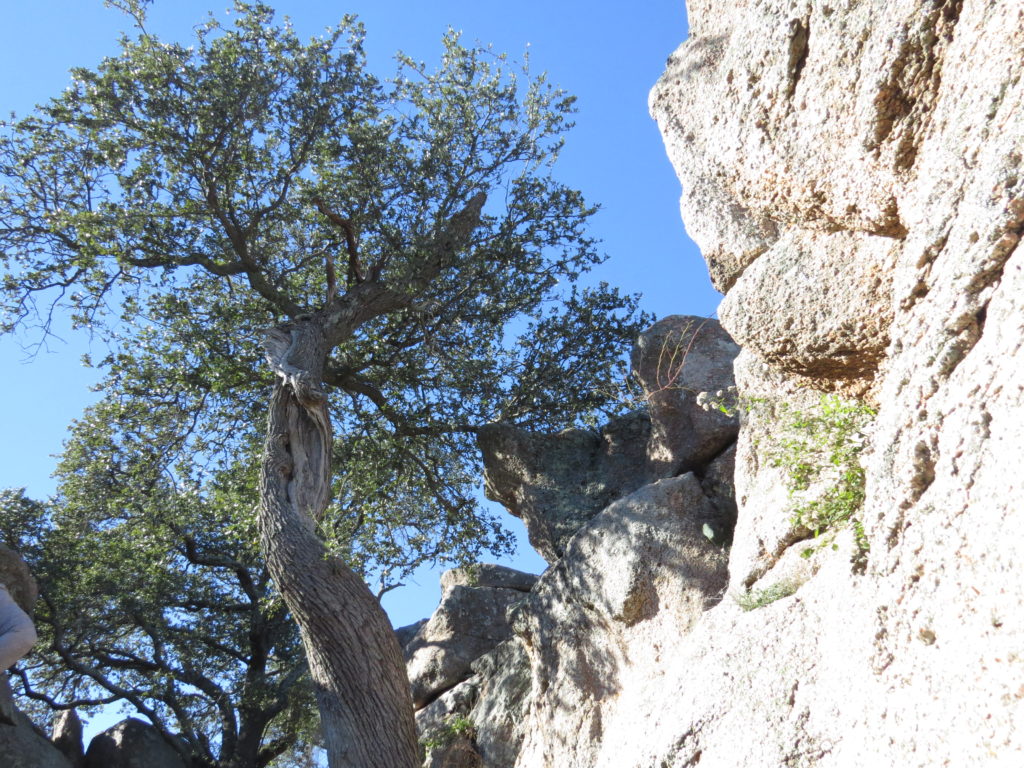
After climbing out of the secret garden—and a few moments when I thought I may be stuck on Enchanted Rock for eternity—we began our descent.
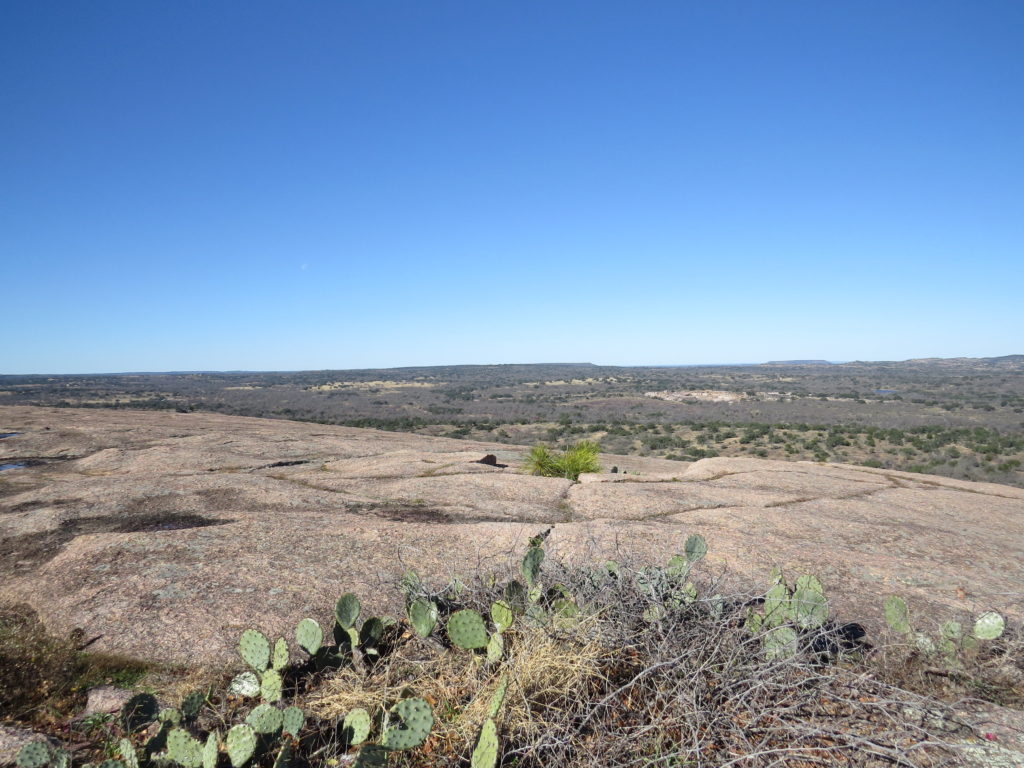

We chose a different side of the rock to hike down—an area with huge cracks and large boulders scattered in random spots.
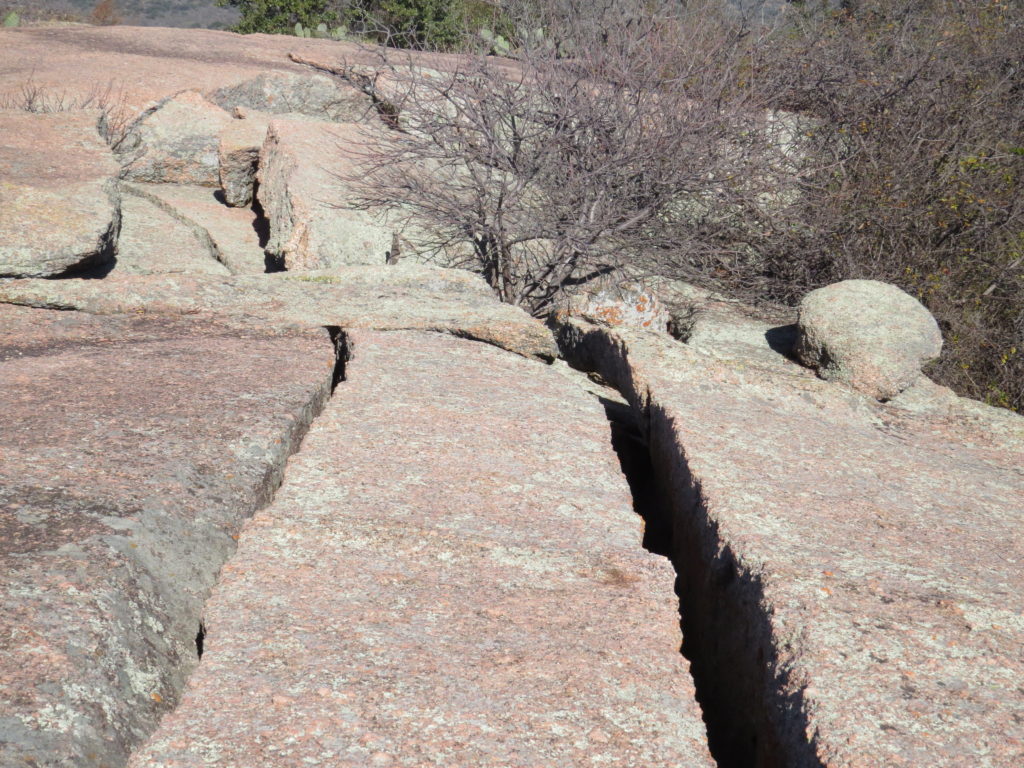
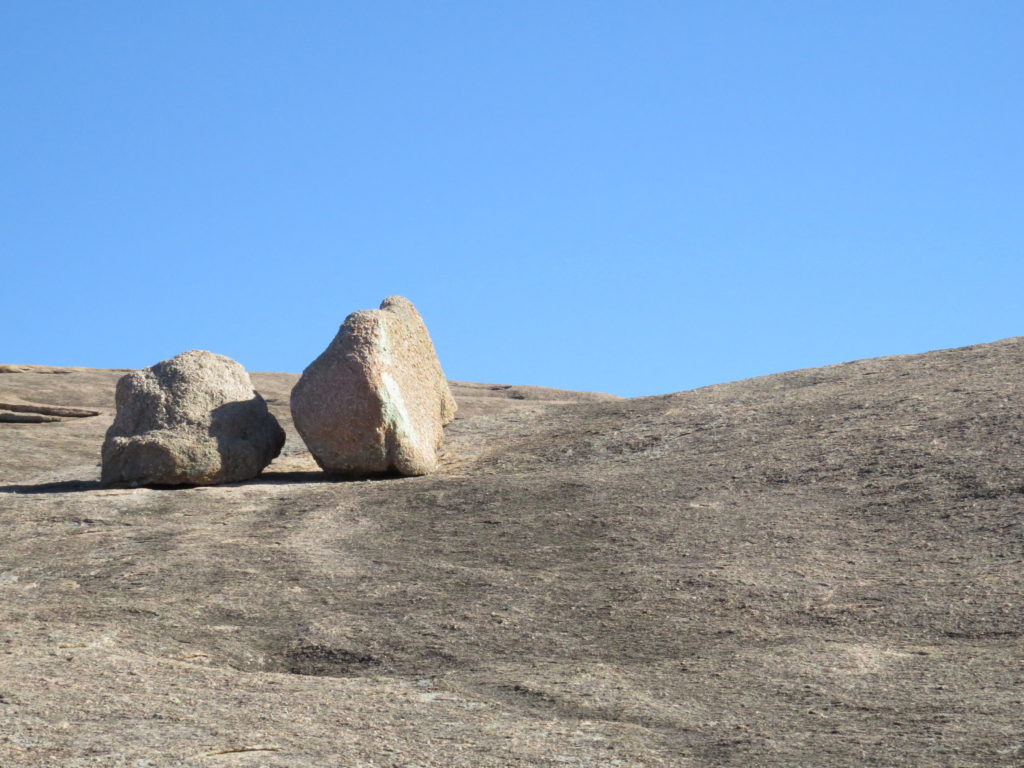
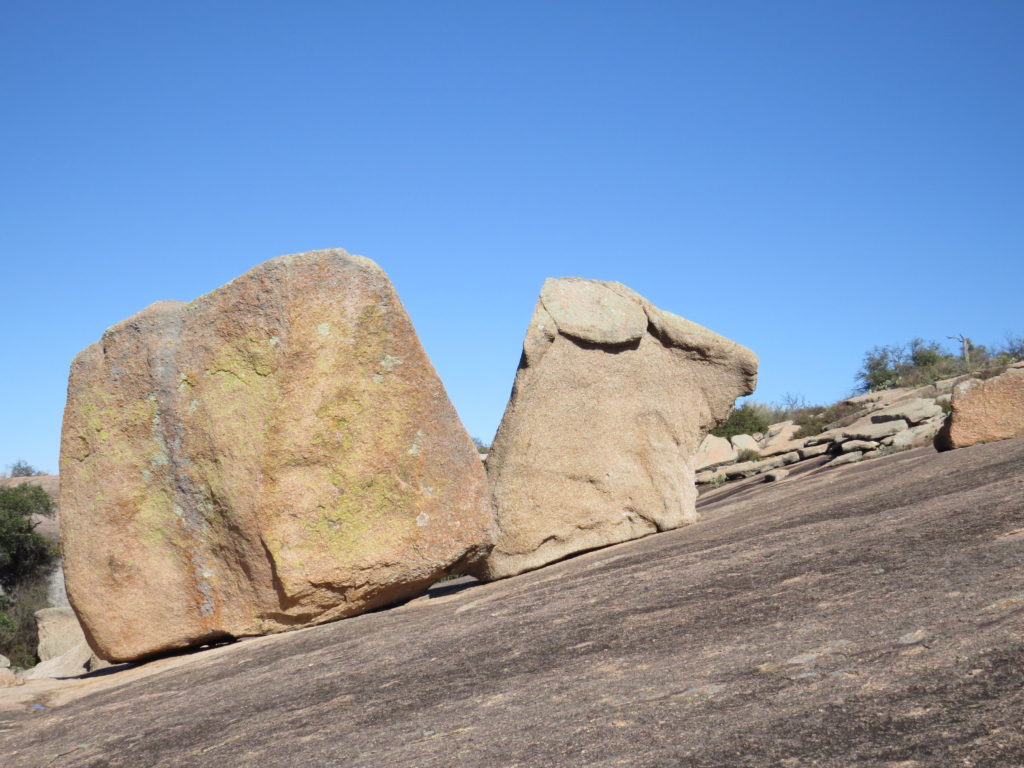
The dome of Little Rock shows the exfoliation caused by expansion and contraction of the rocks and how broken chunks of rocks slide down the side of the dome.
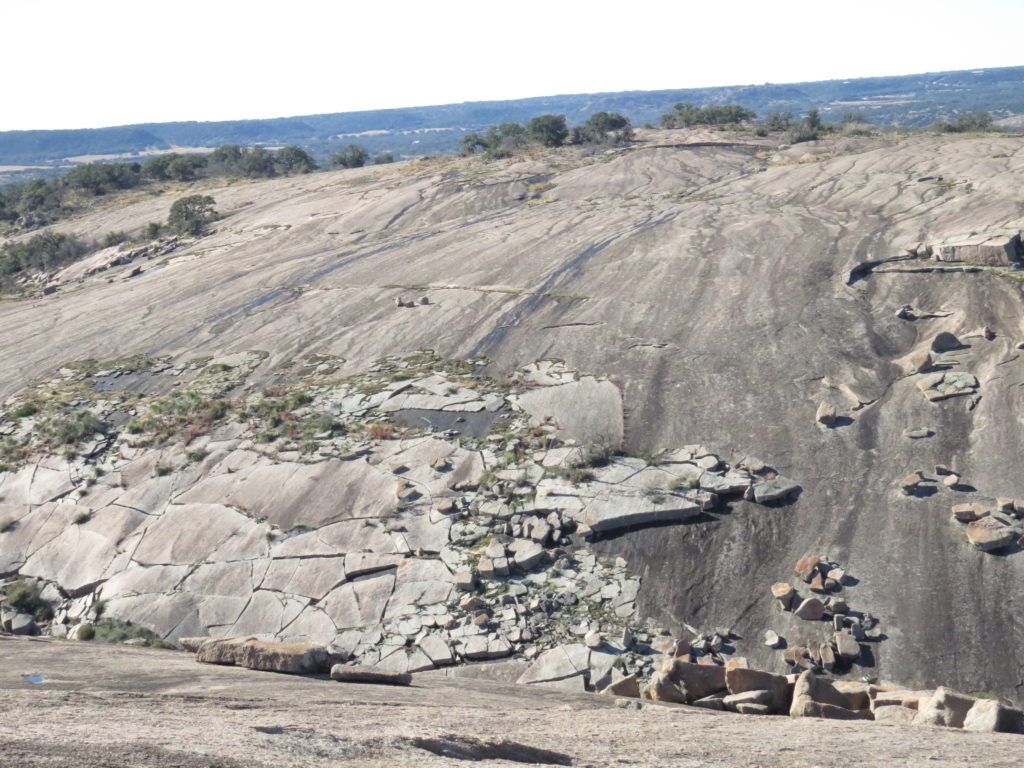
A rift of amber bluegrass and one of green, grew in the nearly vertical cracks as we climbed down Enchanted Rock.
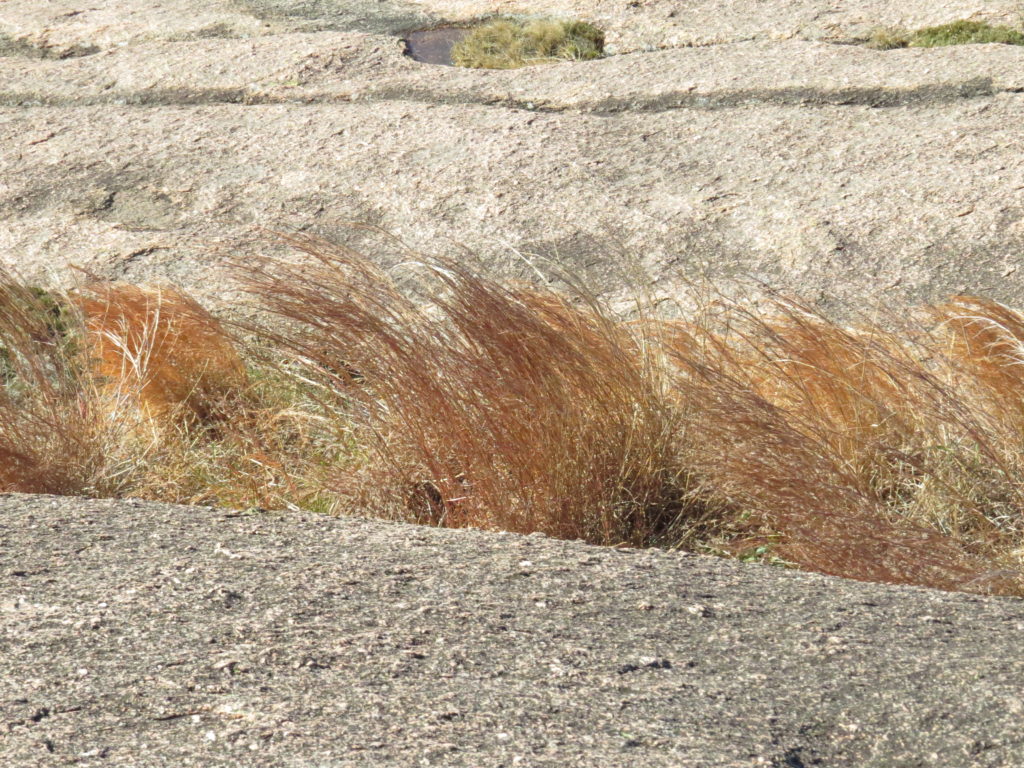
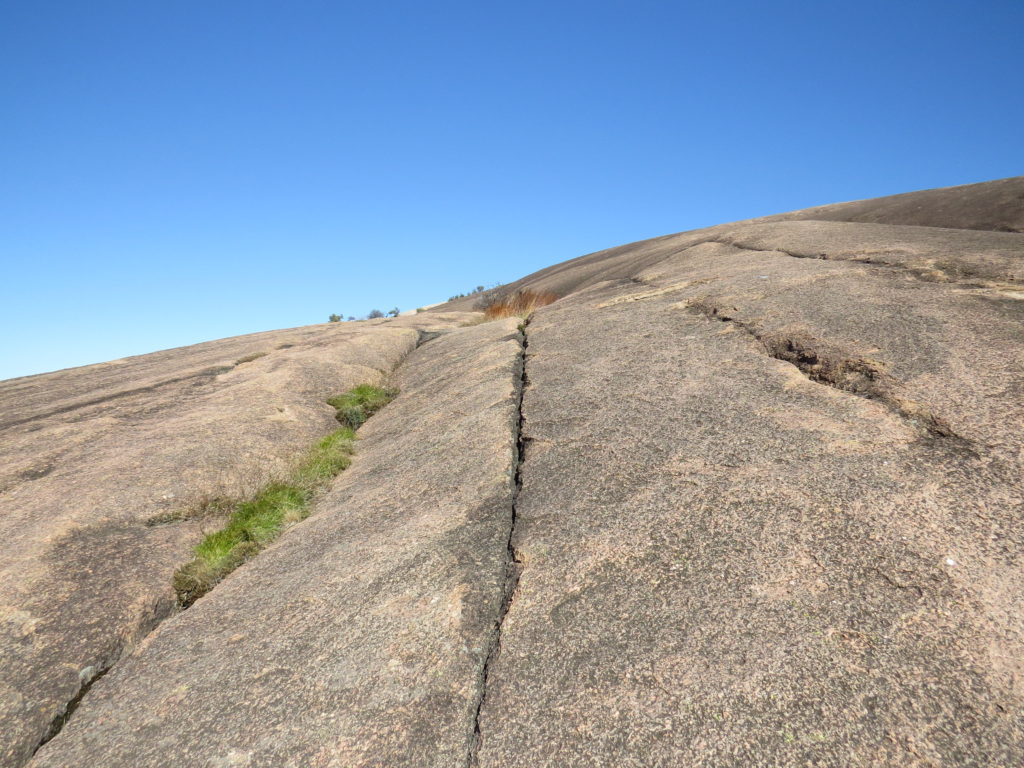
Down from the dome, down to foliage, down to Earth.
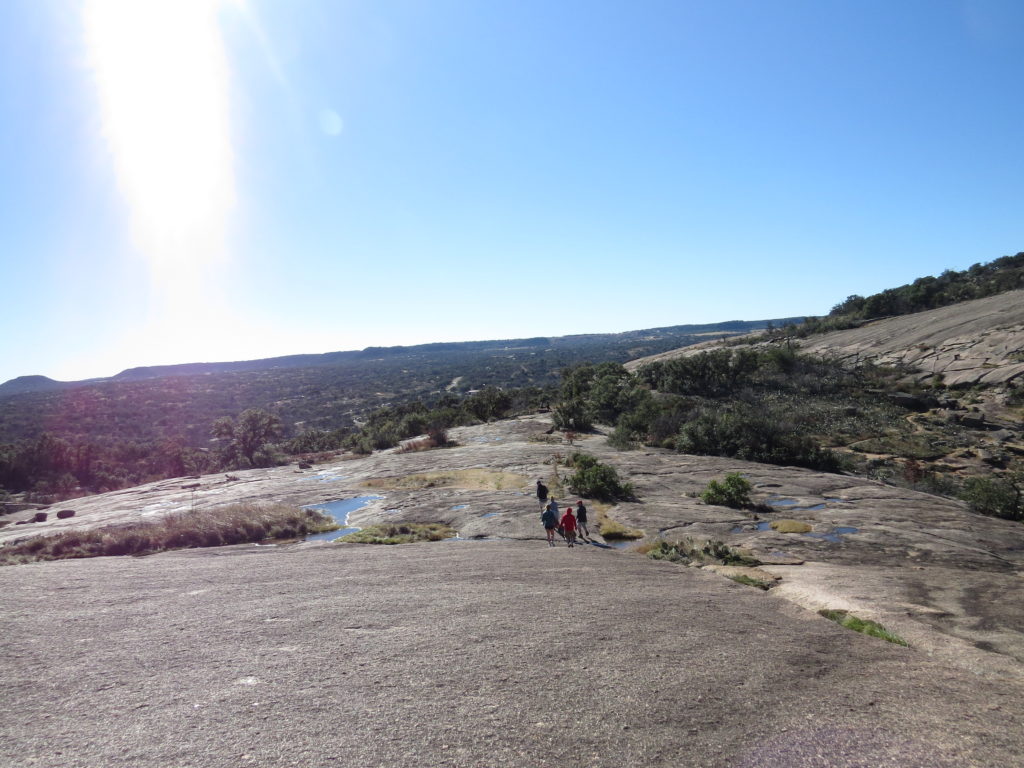
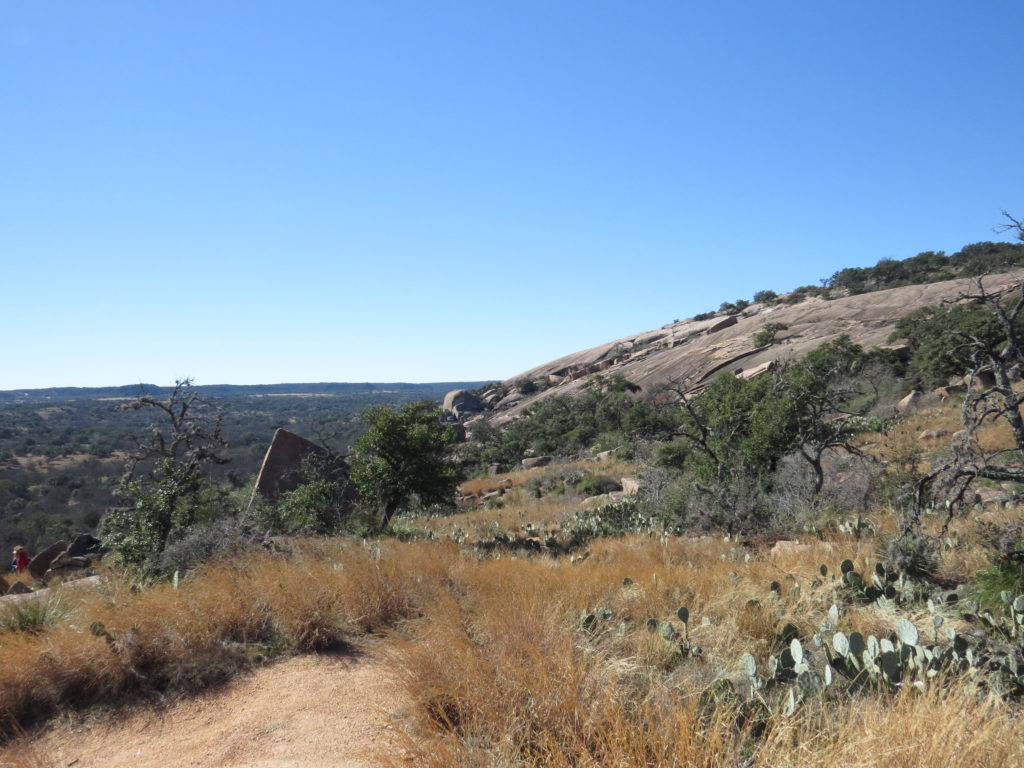
Even though we didn’t see the vernal pools of water glowing in the moonlight, I understand why this place is called Enchanted Rock. It was unlike any place I had ever been before; it had a grounded, solid feel of ancient wisdom at the same time as an other-worldly, ethereal feel of life-affirming Spirit. The wind with all its power was mesmerizing. The sunshine sublime. The patches of plants growing on rock, enthralling. It is a place to base our lives on—the quest for body-regulating grounding wisdom and for exquisite, joy-filled Spirit. The challenging trek to the top of the Rock was individually fulfilling and profoundly enhanced by our experiencing it together. The very real yin and yang of our lives—these opposite forces that are complementary and interdependent. Our interconnected earthly-divine lives living on an enchanted rock.
For the first part of our Enchanted Rock adventure, go to At the Foot of the Rock.
